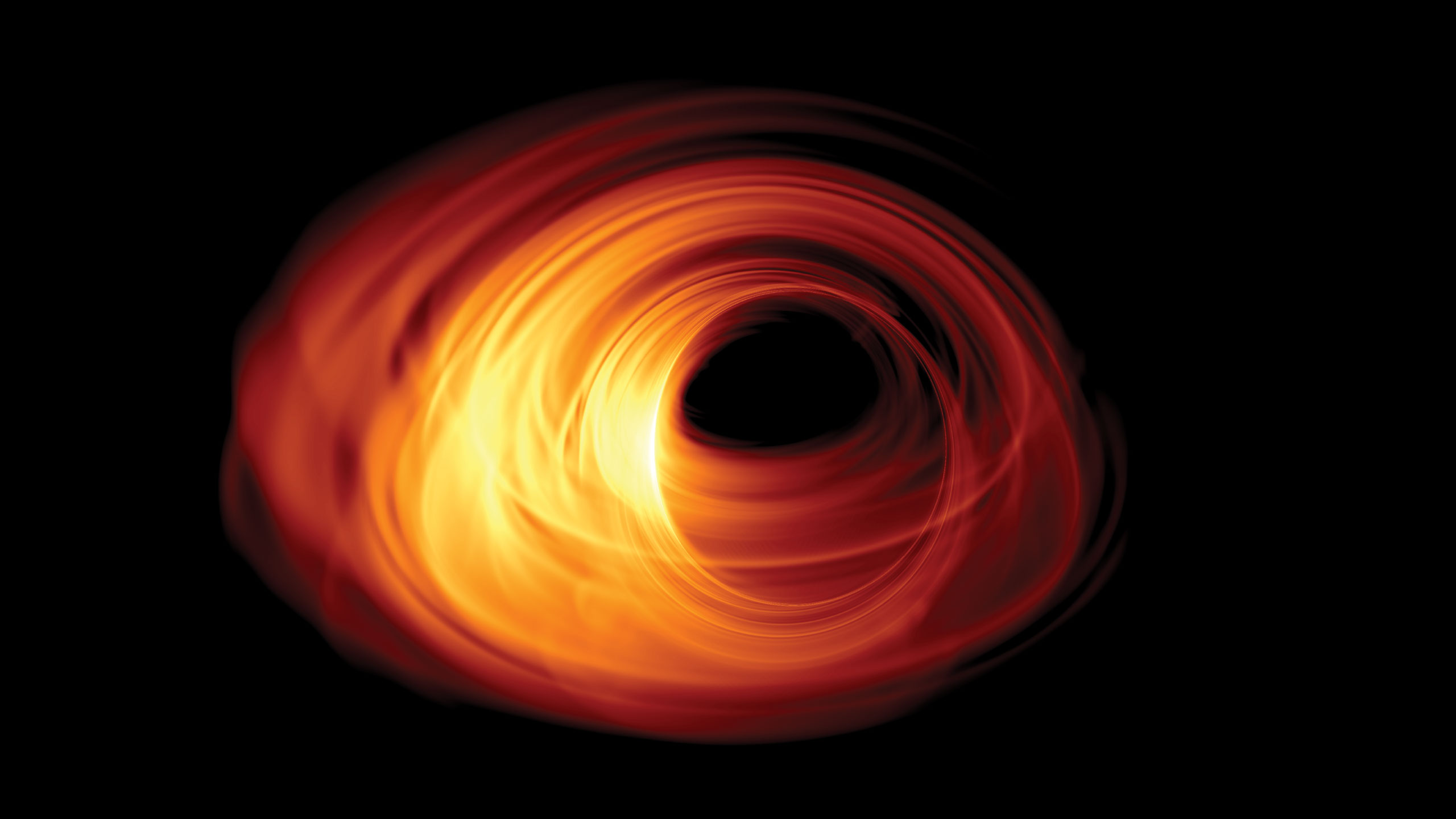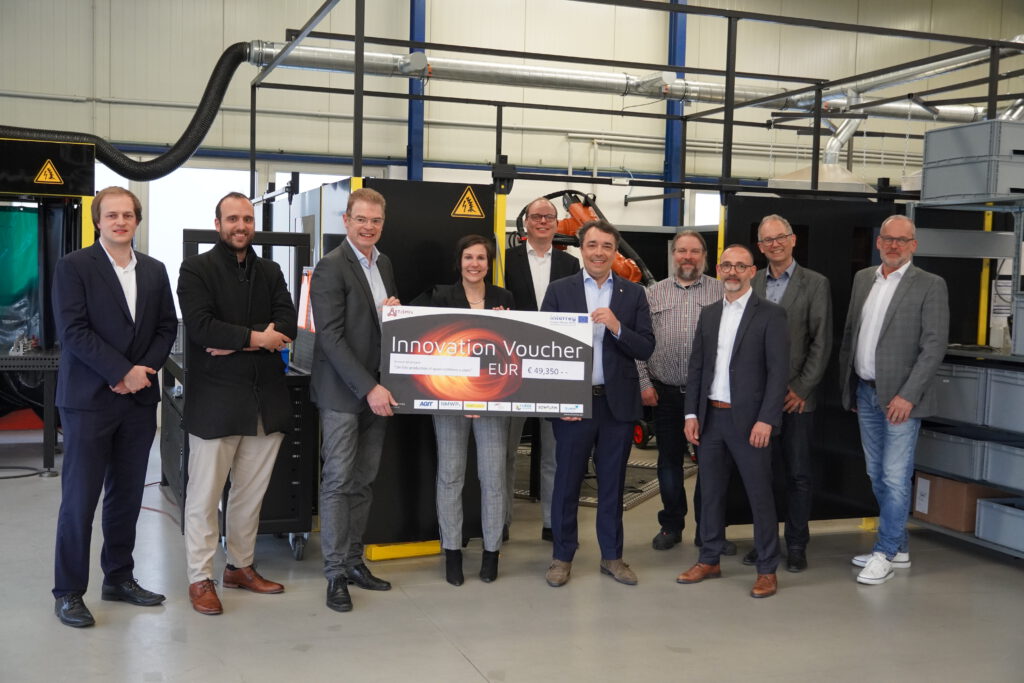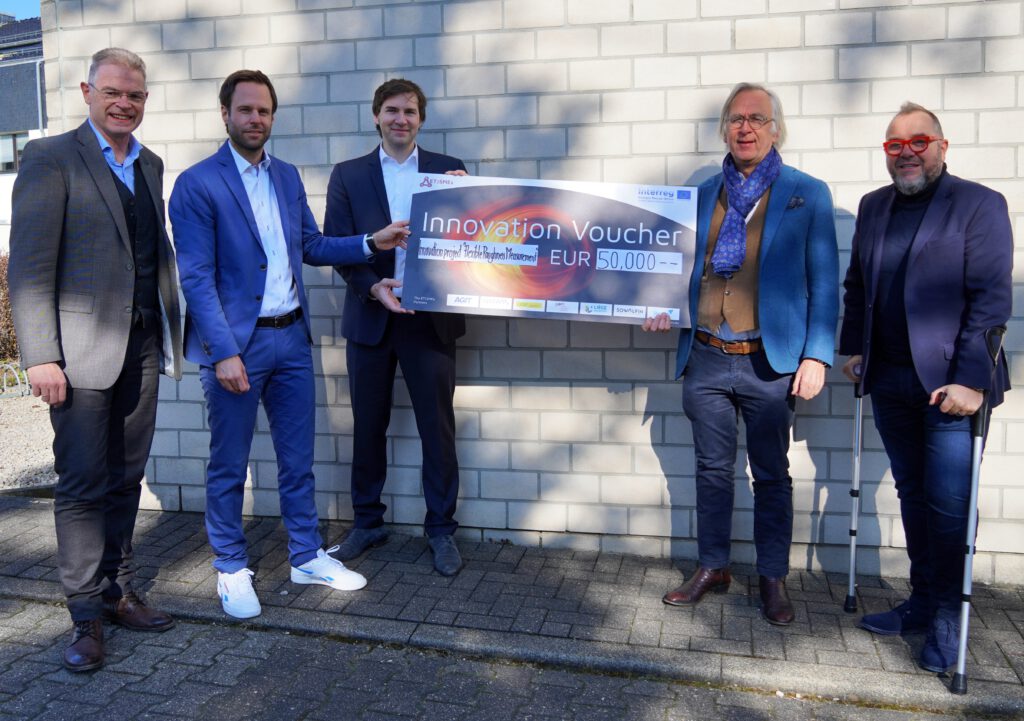The ET2SMEs project is carried out under the Interreg V-A Euregio Meuse-Rhine Programme, with € 1.25 million from the European Regional Development Fund (ERDF). By investing EU funds in Interreg projects, the European Union invests directly in economic development, innovation, territorial development, social inclusion and education in the Euregio Meuse-Rhine.
ET2SMEs News / Events
11.12.2023
Consolidation of Einstein Telescope in the EMR websites:
It is great that you have come to the ET2SMEs webpage and are checking out the nice activities that are listed here.
Because the Einstein Telescope is much more than the ET2SMEs project we want to make you aware of the central page for the ET in EMR:
https://www.einsteintelescope-emr.eu
From now on you will find all the latest news and information under this link.
22.11.2023
A great final event of ET2SMEs and E-TEST – but the best is yet to come!
With a big bang, the Interreg Meuse-Rhine projects ET2SMEs and E-TEST celebrated the goals achieved and the ET community created during the project run times during their final event on 21 November 2023 at Blue Point Liège.
The preparatory projects supporting the creation of the Einstein Telescope in the Belgian-German-Dutch border triangle have achieved more together than the sum of the individual projects would – thanks to good exchange between the projects and the strengthening of the regional Einstein Telescope community. While preliminary scientific work such as geological analyses of the region and the prototype of important telescope components were carried-out in E-TEST, ET2SMEs focused on the regional high-tech industry and transported the needs of science into the economy in order to strengthen technology transfer and value creation in the region.
All these results were now presented at the final event. In addition to top-class lectures and panel talks, a presentation booth for the scientific results and a comprehensive exhibition of all ET2SMEs innovation project,s as well as the “Mapping of ET-relevant actors”, in which the technologically relevant players, mainly businesses, in the border triangle were recorded and categorised as part of the ET2SMEs project, were shown. The aim is to strengthen the high-tech community and network the players with each other to boost the region’s innovative strength – both geographically and technologically across borders. The achievements of the ET2SMEs-Project can be found in our eBulletin: https://et2smes.eu/et2smes-innovation-projects/
These projects and such an event do not go unnoticed. In addition to high-calibre representatives from business and science, political representatives from the participating regions also took the opportunity to make an active contribution to the programme, thus underlining the importance of the overall “Einstein Telescope” project.
Although the projects came to an end, we will carry on with some of the activities: It is foreseen, that there will be more ET Industrial Advisory Board Meetings (ET IABs) in the future. Also, this Website will remain online, providing further information on the ET Technologies Online Catalogue (https://et2smes.eu/et-technologies-catalogue/), as well as the ET2SMEs CRAFT Mapping-tool (https://et2smes.eu/mapping/).
So – to stay up to date, you know where to find us. 😊
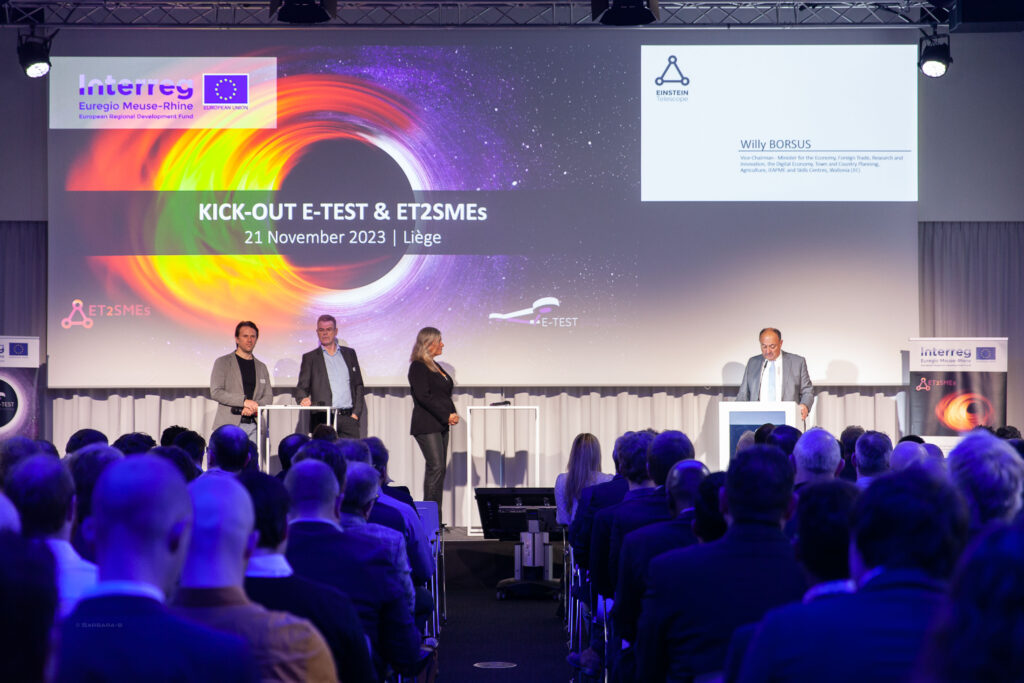
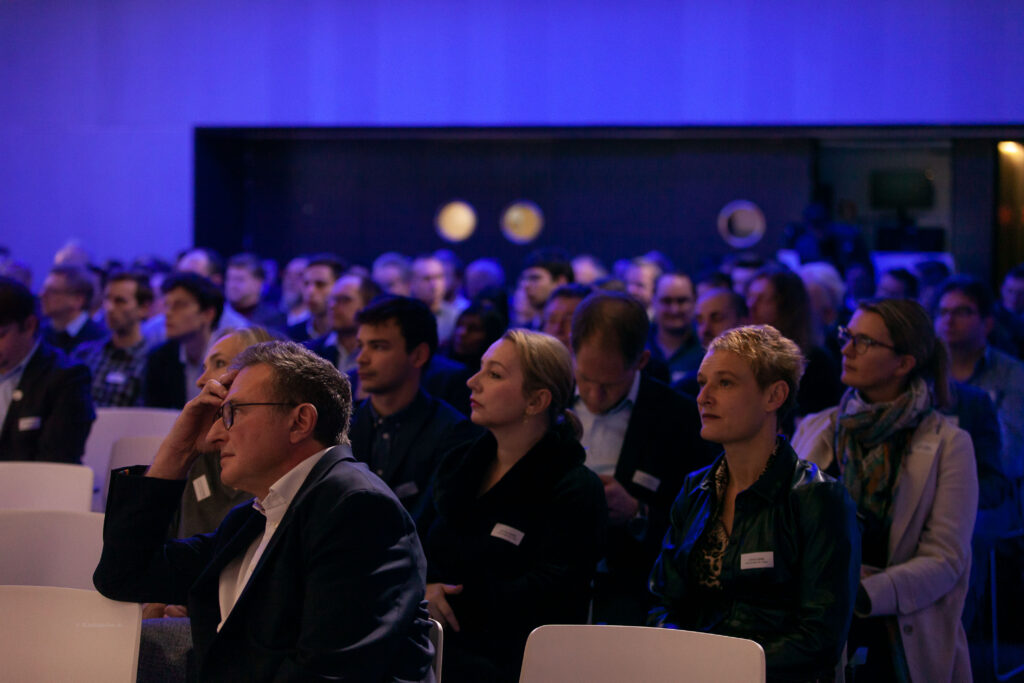
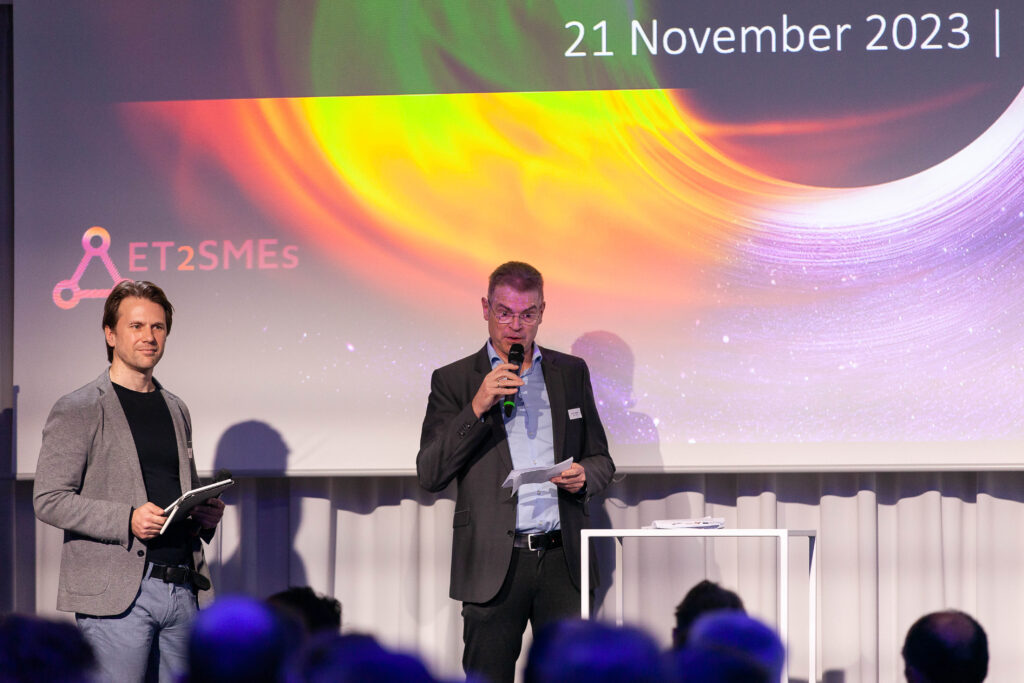
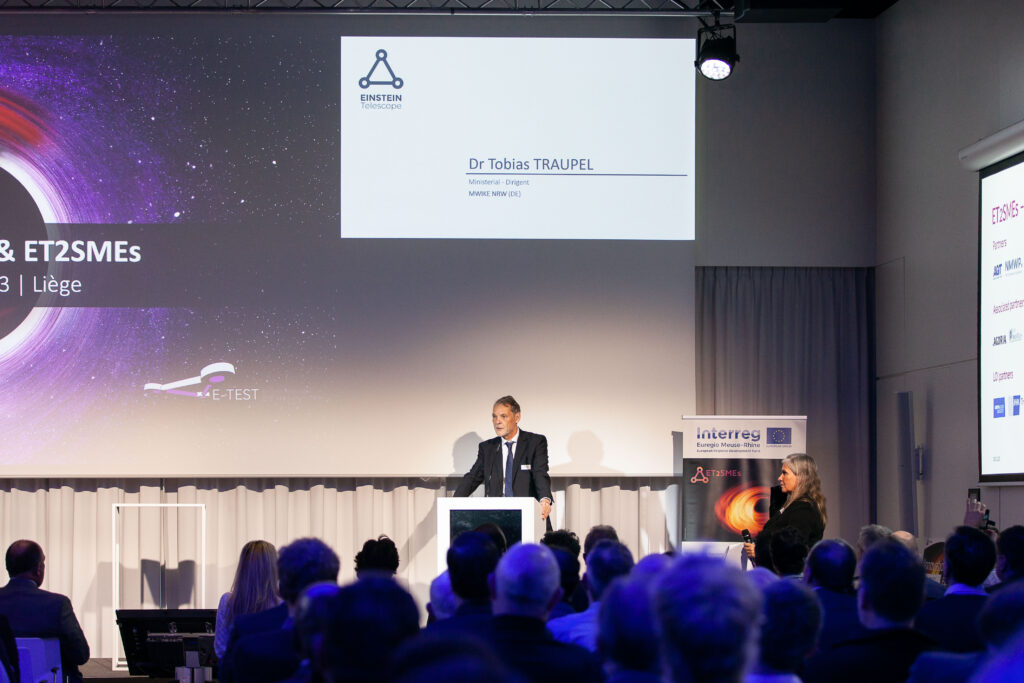
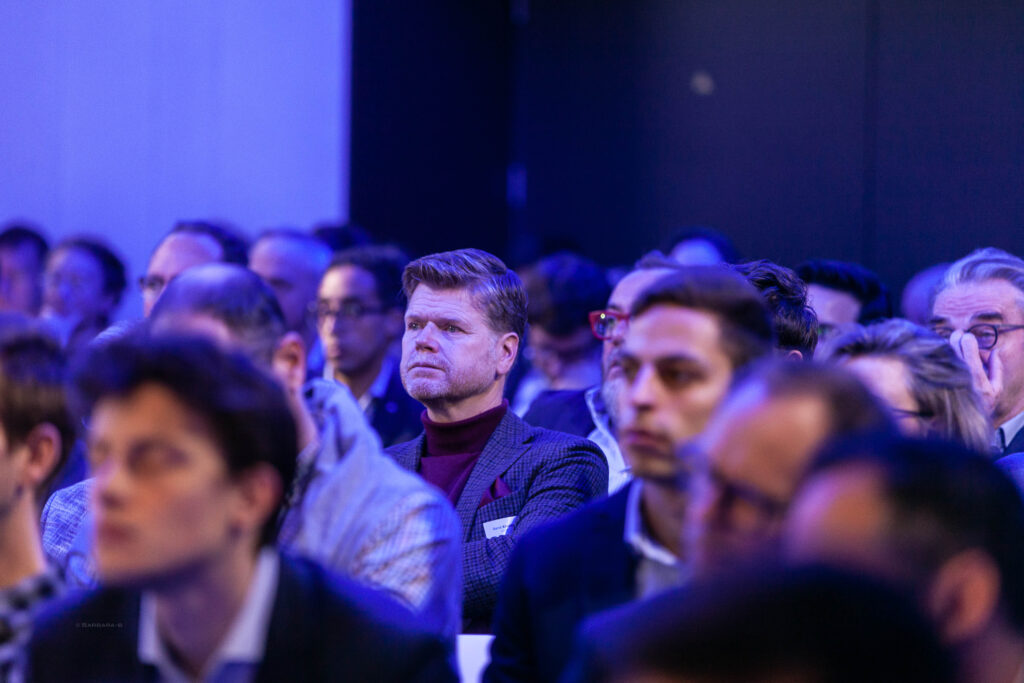

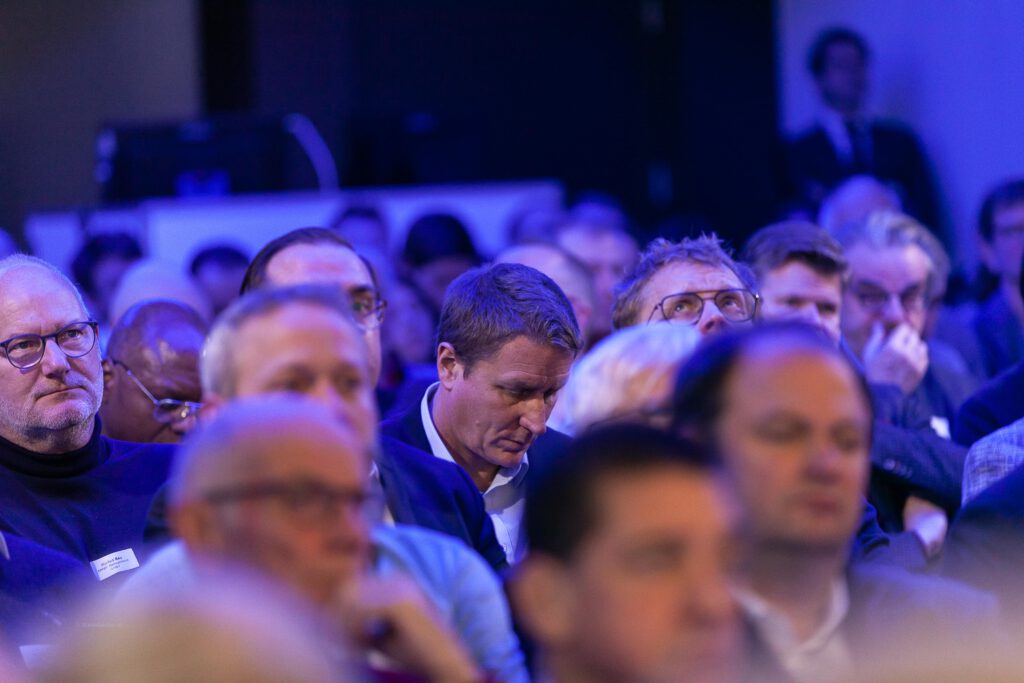
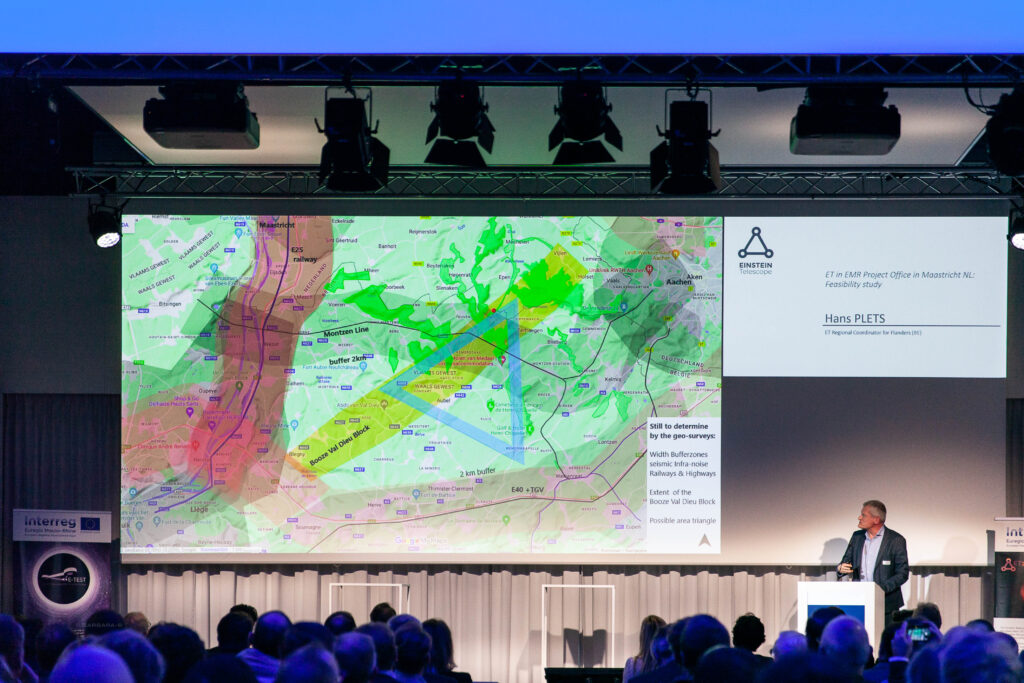

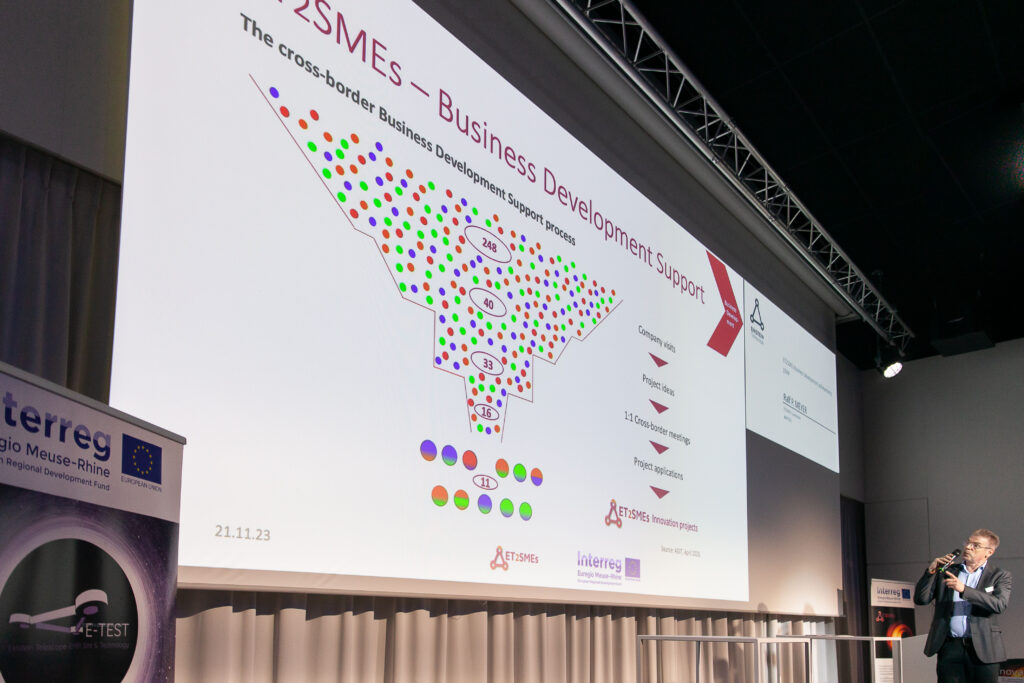
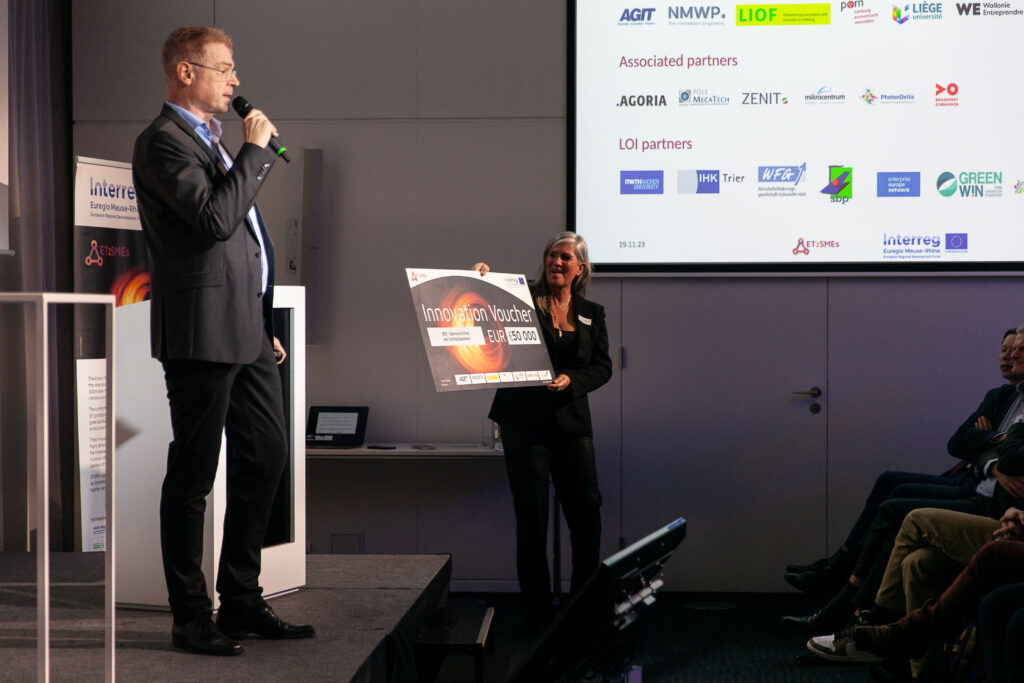
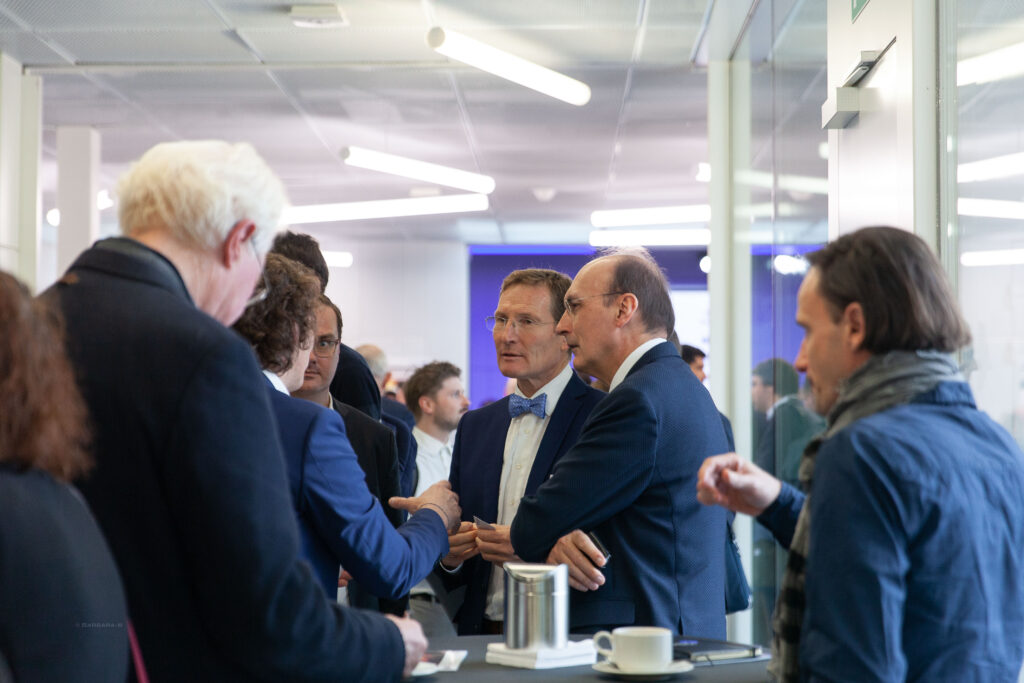
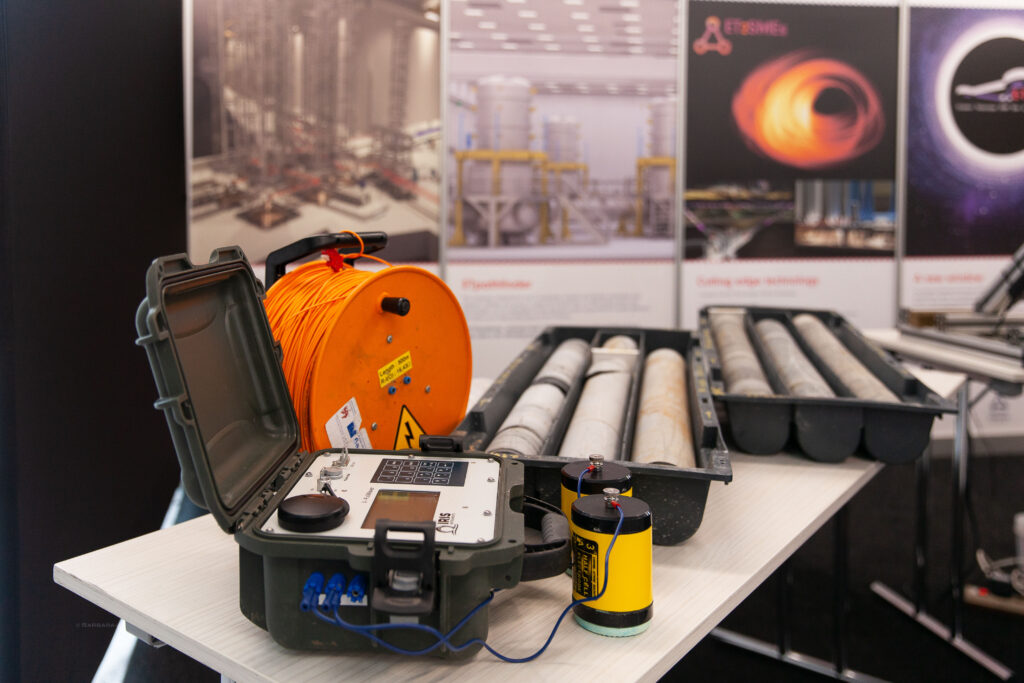
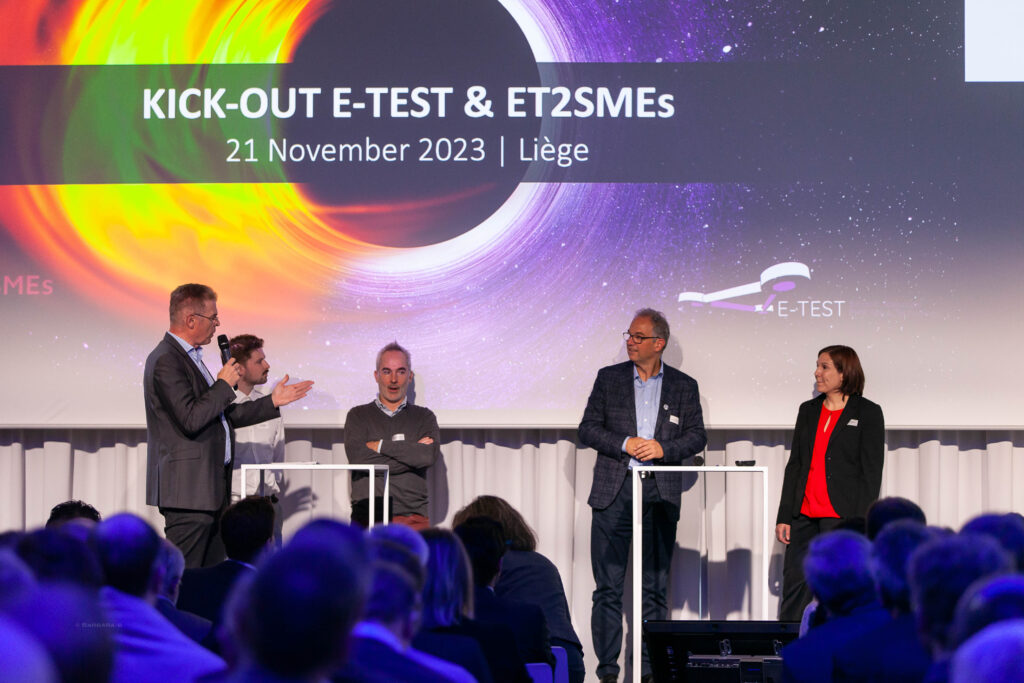
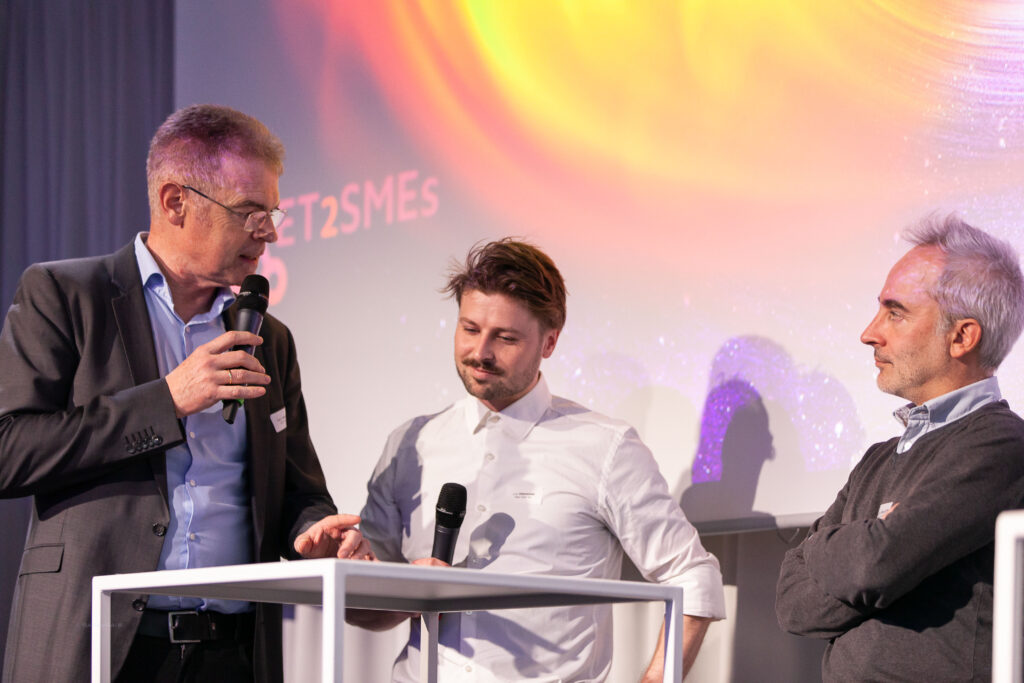
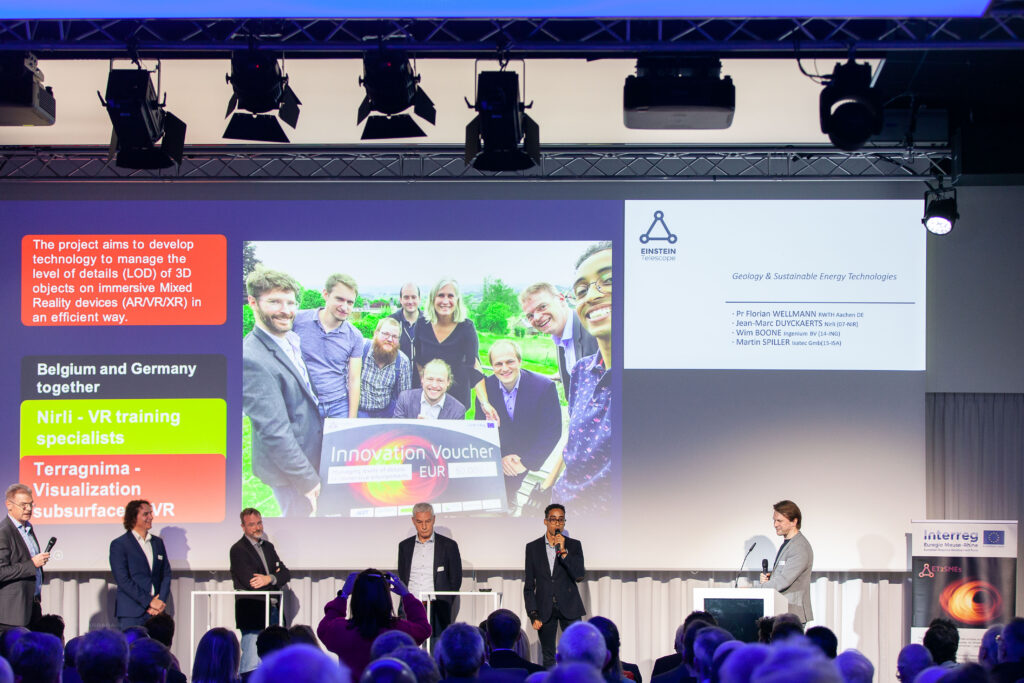
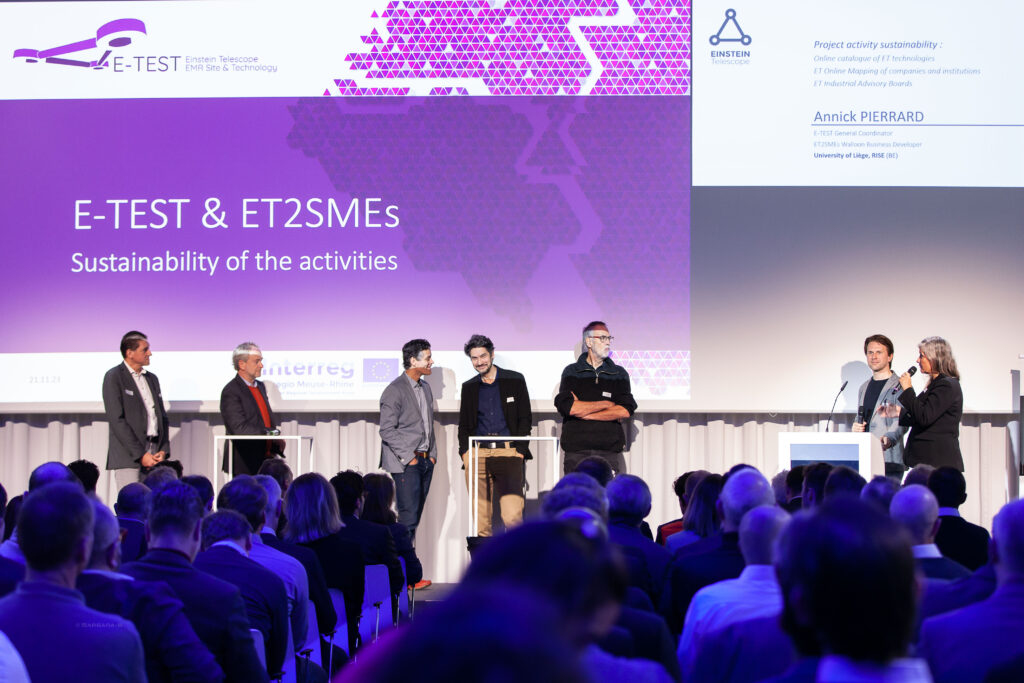
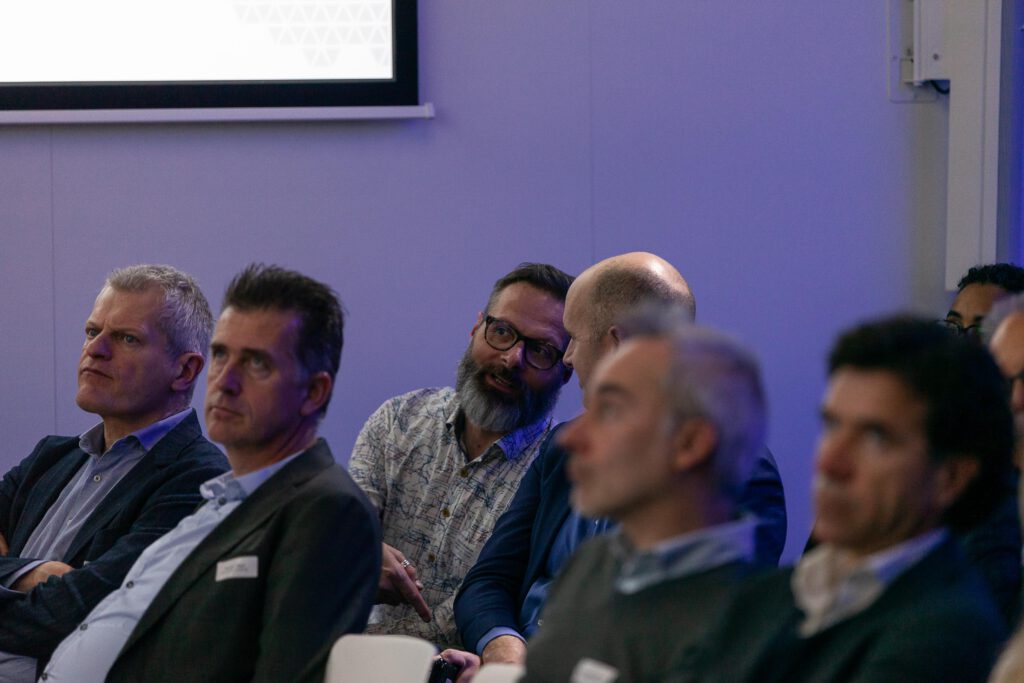
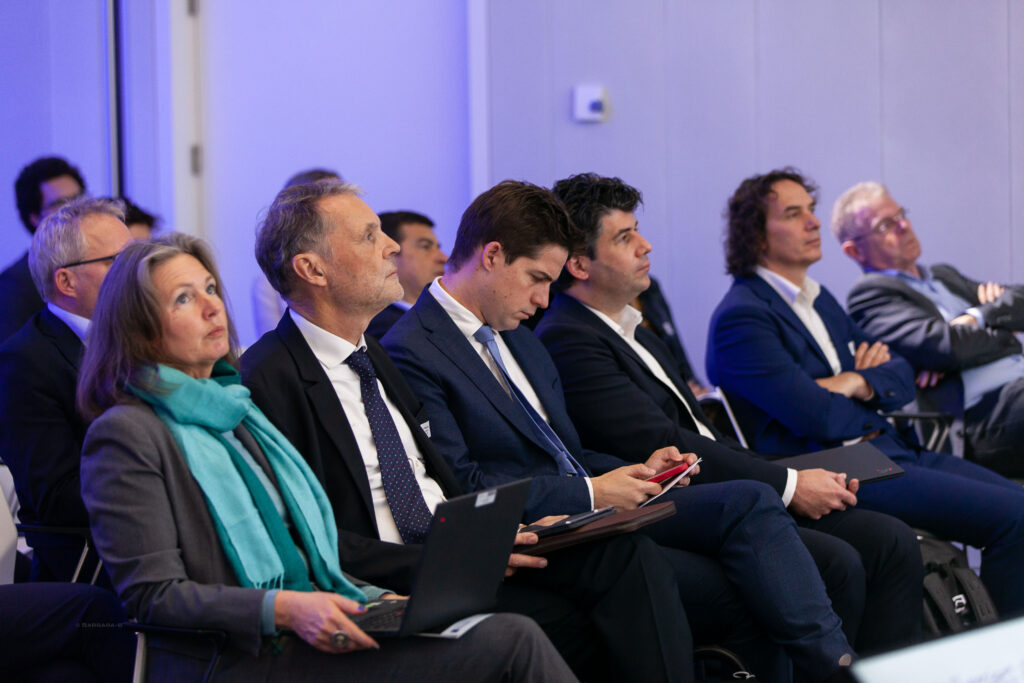

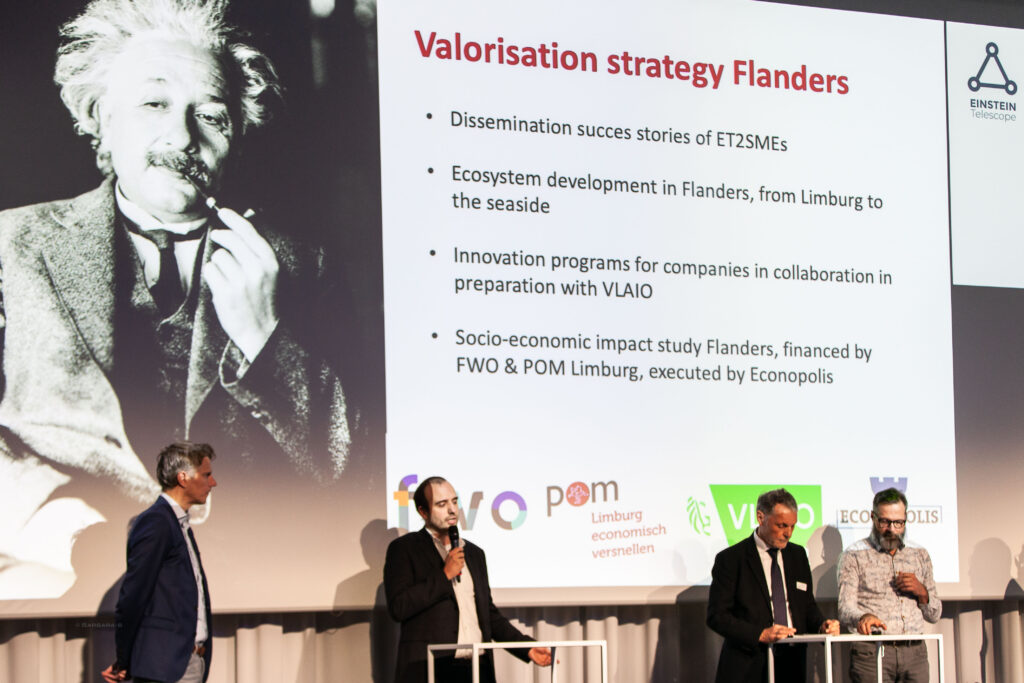
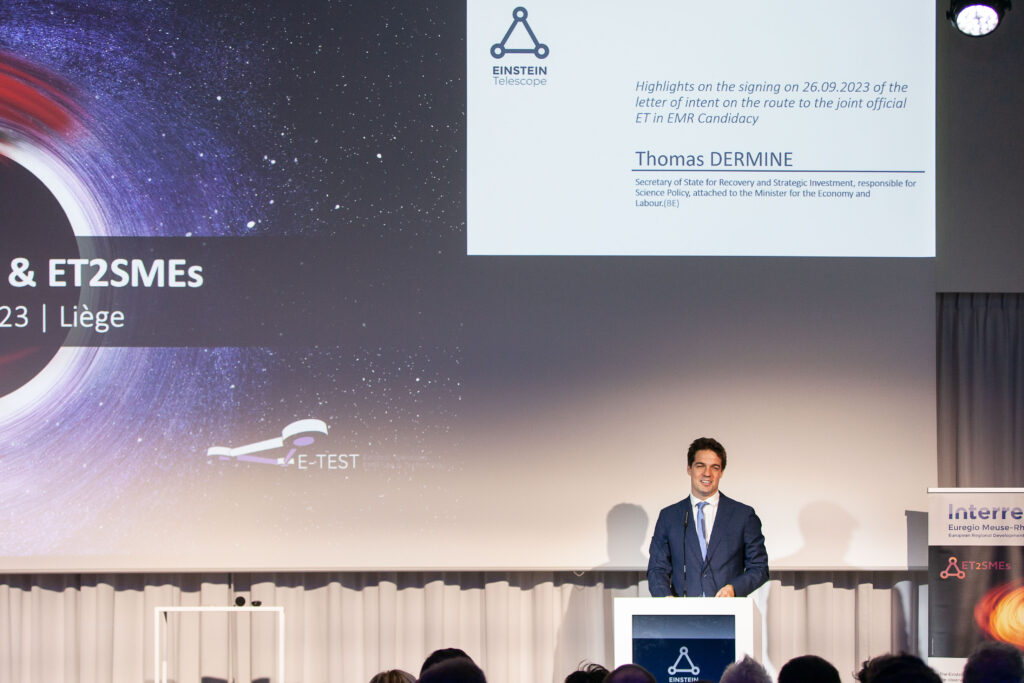
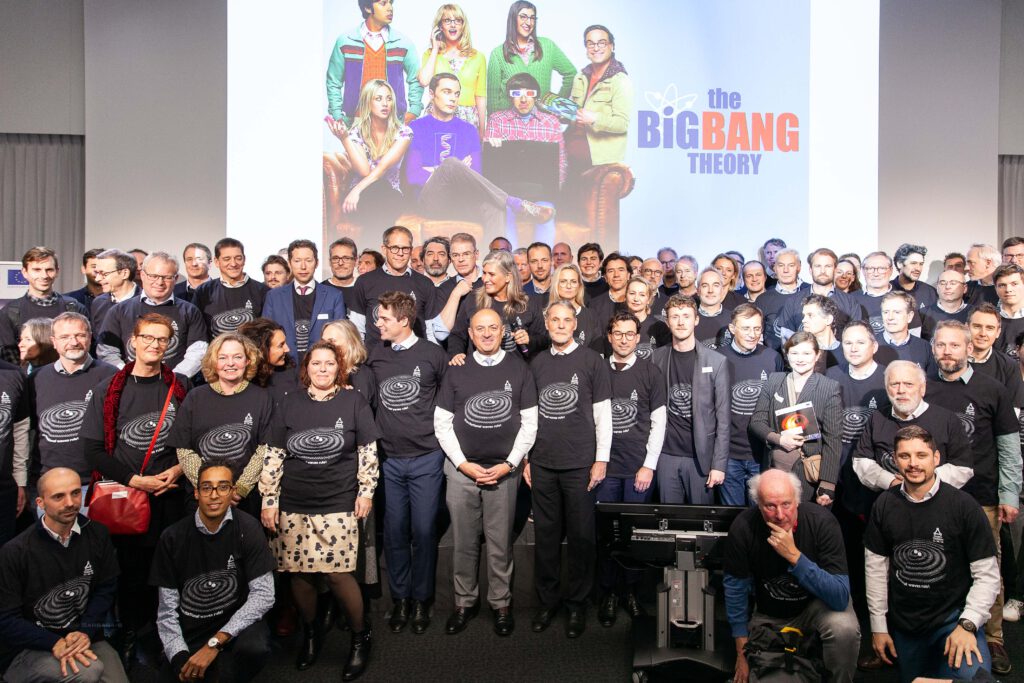
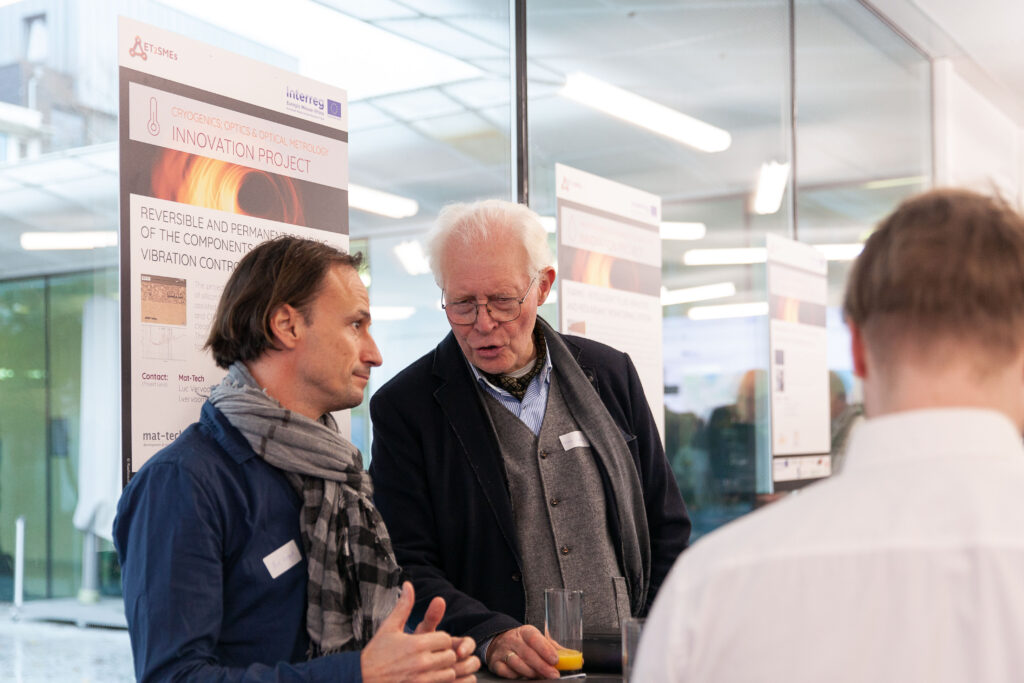
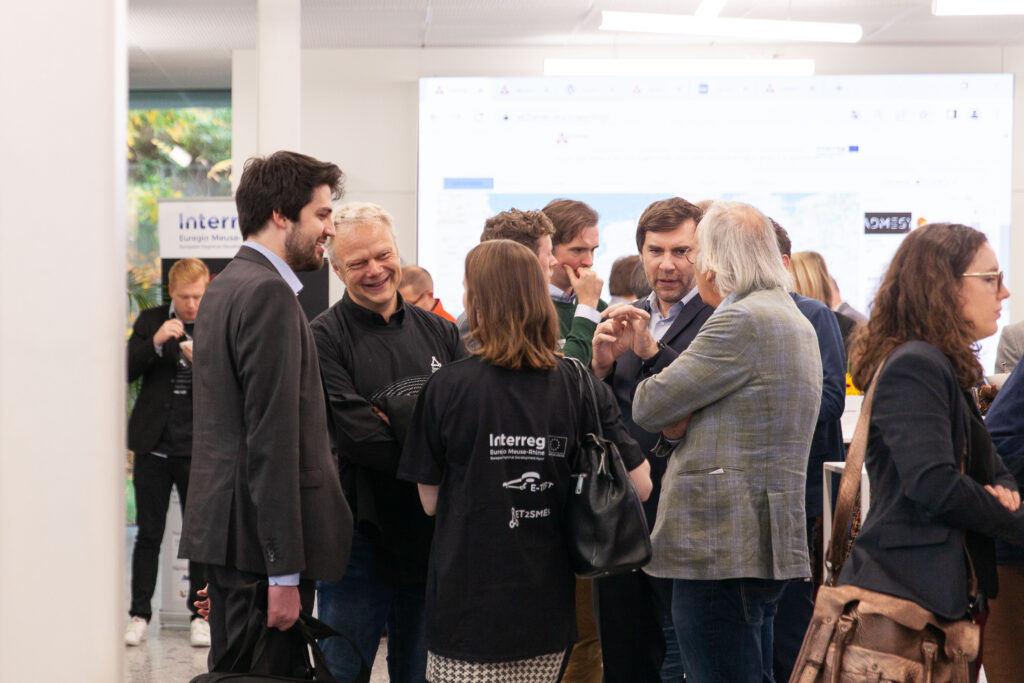
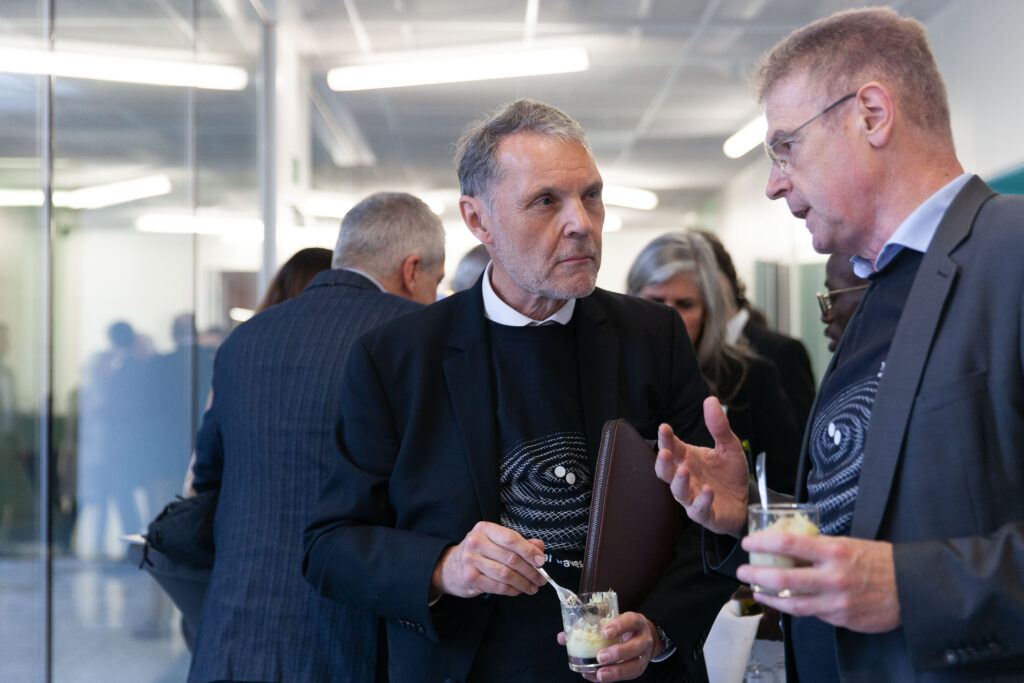
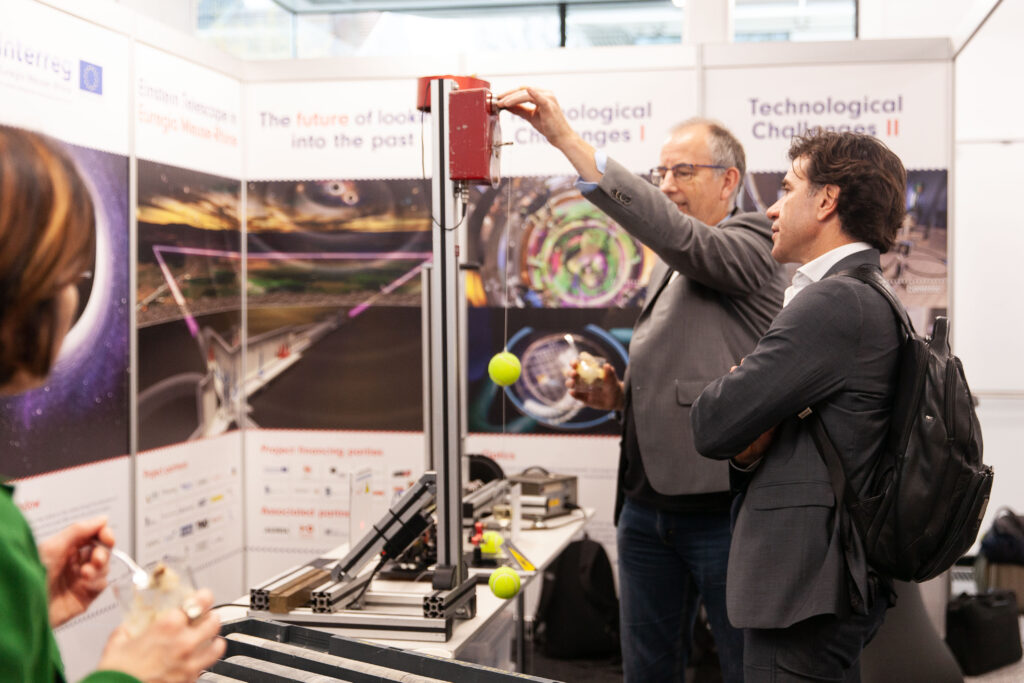
04.07.2023
New R&D scheme for high-tech companies in the Netherlands

To stimulate innovation and accelerated development of new technologies for the Einstein Telescope, an R&D scheme will soon be launched for Dutch high-tech companies. €12.085 million is available for this purpose. That amount was allocated in 2022 in the second round of projects from the National Growth Fund.
Einstein Telescope valorisation programme
The scheme is part of the Einstein Telescope valorisation programme. Regional development company (ROM) LIOF is in charge nationwide, also on behalf of the Ministries of EZK (economy) and OCW (including science), Nikhef and the Province of Limburg. With three service points at the ROMs in Brabant (BOM), South Holland (InnovationQuarter) and East Netherlands (Oost NL), a national connection is sought with high-tech ecosystems around the technical universities and consortia are built together with industry and knowledge institutions.
Technology domains
The scheme will be open to partnerships around five technology domains relevant to the Einstein Telescope. These domains are: vibration-free cooling, vacuum technology, vibration damping, optics and thermal deformations.
The consortia can consist of startups and SMEs, large companies (corporates) and knowledge institutions. By collaborating with these diverse parties, the scheme hopes to promote cooperation between different players in the innovation ecosystem and accelerate the development of breakthrough technologies. The scheme also hopes to promote applications and uses in other areas and sectors.
Dutch Minister Dijkgraaf of Education, Culture and Science: “The arrival of the Einstein Telescope will provide scientific breakthroughs in how the world looks at the universe. Building an underground advanced observatory for gravitational waves also requires new technological breakthroughs. This scheme helps ensure that companies can work with research institutes and universities to develop and accelerate the necessary technology and innovation. Moreover, it helps position the Netherlands even more as an international hub of technological progress.”
Programme manager Jorg van der Meij (LIOF): “The fact that there will now be an extra stimulus specifically for Dutch high-tech companies is a very good addition to some extremely successful cross-border programmes that have already supported companies in developing innovative technologies for the Einstein Telescope. My colleagues and I think we can reach and facilitate interested companies well.”
Timing
The timeline of the scheme: general information will become available in July 2023, followed by the expected opening of the first call in autumn 2023. Interested parties are encouraged to keep an eye on the announcements and guidelines for further details. They can also contact a business developer in various regions. More info can be found at the LIOF website.
About the Einstein Telescope
The Einstein Telescope will be an advanced underground observatory for gravitational waves. The border region of the Netherlands, Belgium and Germany is an ideal location for this facility because of its tranquillity, stable soil, and strong ecosystem of knowledge institutions and high-tech companies. The location of this top facility will be announced in 2025 or 2026. European ministers are expected to decide on the location of Einstein Telescope in 2025.
About the National Growth Fund
With the National Growth Fund, the Dutch government is investing €20 billion between 2021 and 2025 in projects that will ensure long-term economic growth. These are targeted investments in two areas where there are the most opportunities for structural and sustainable economic growth: Knowledge Development and Research, and Development and Innovation. The underlying idea is that economic growth generates more income, allowing for continued investment in healthcare, education and the necessary measures to combat climate change.
Image: Einsteintelescope.nl
Written by Dewi Andoetoe
23.05.2023
Great interest in ET technologies at the 10th NRW Nano-Conference
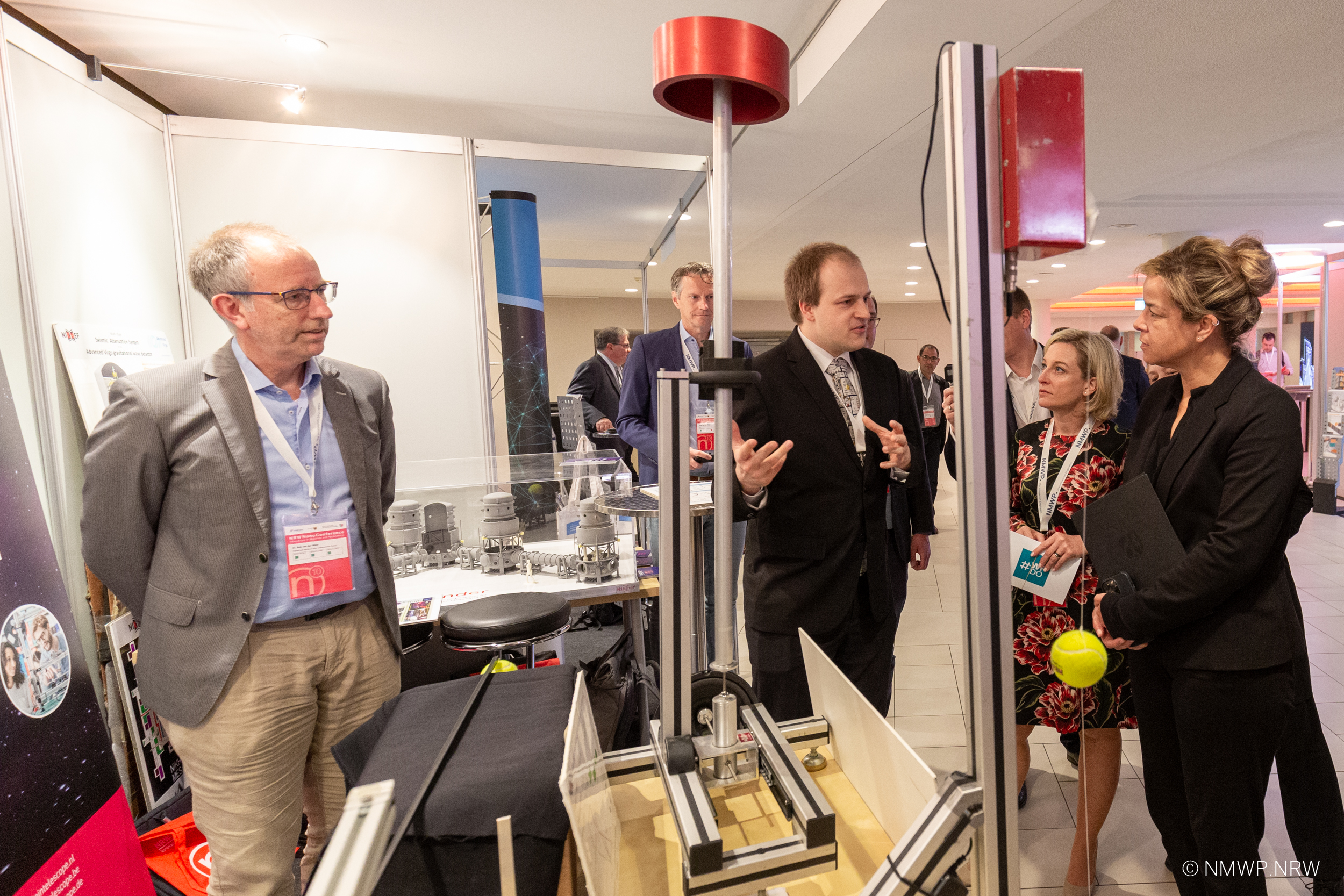

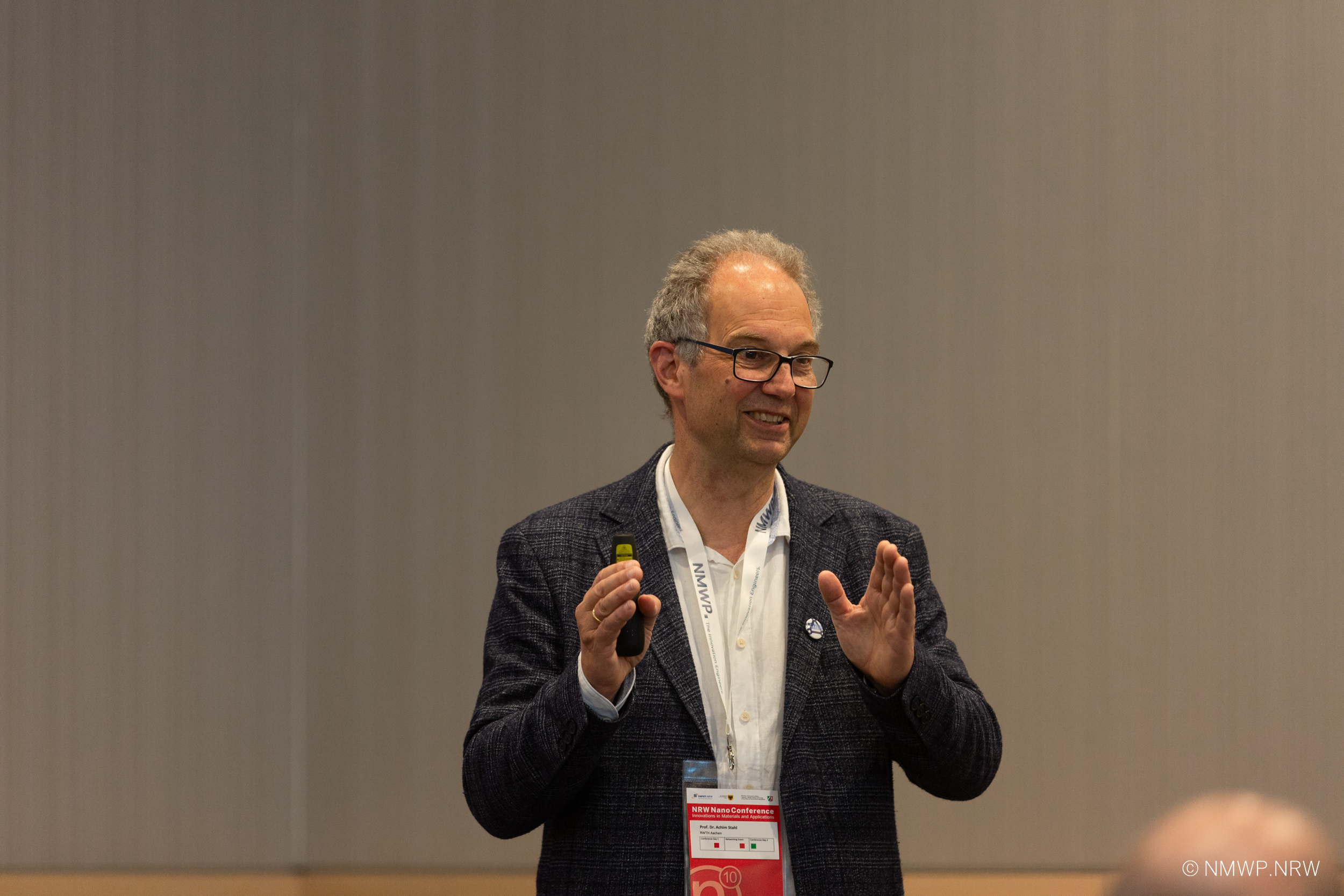
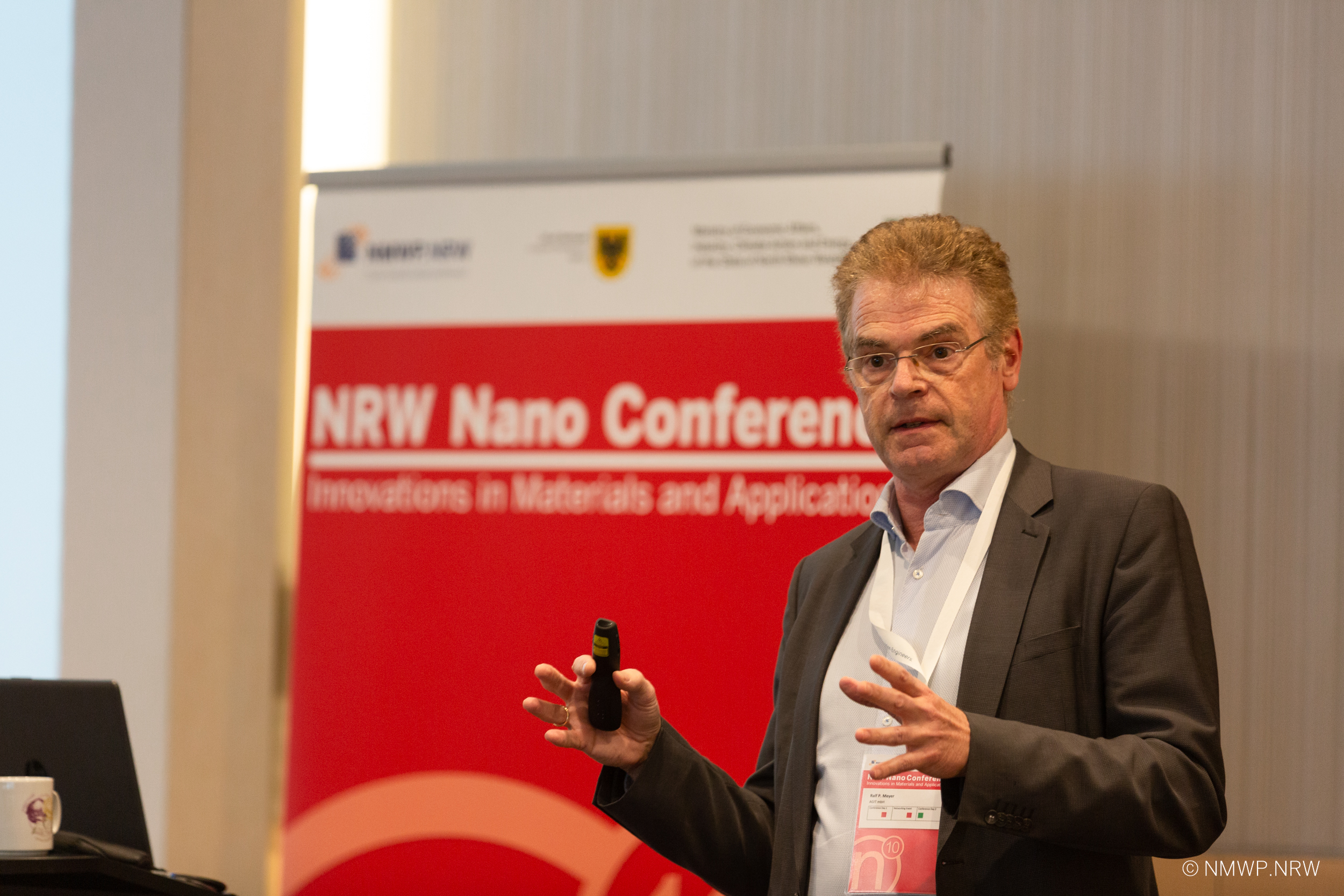
The preparatory projects of the Einstein Telescope in the Euregio Meuse-Rhine, E-Test and ET2SMEs, presented an insight into the large-scale research facility and the path to it to the high-tech community of NRW at the 10th NRW Nano Conference. With exciting experiments on measuring gravitational waves, the Einstein Telescope’s stand was a real crowd-puller at the exhibition. NRW Economics Minister Mona Neubaur also visited the stand at the opening to find out about the current status. More detailed information was presented to the interested professional audience in a lecture.
Further information on the conference can be found here: www.nanoconference.de/review-2023
28.02.2023
Additional Innovation Vouchers for Projects Nr. 10 and 11 granted
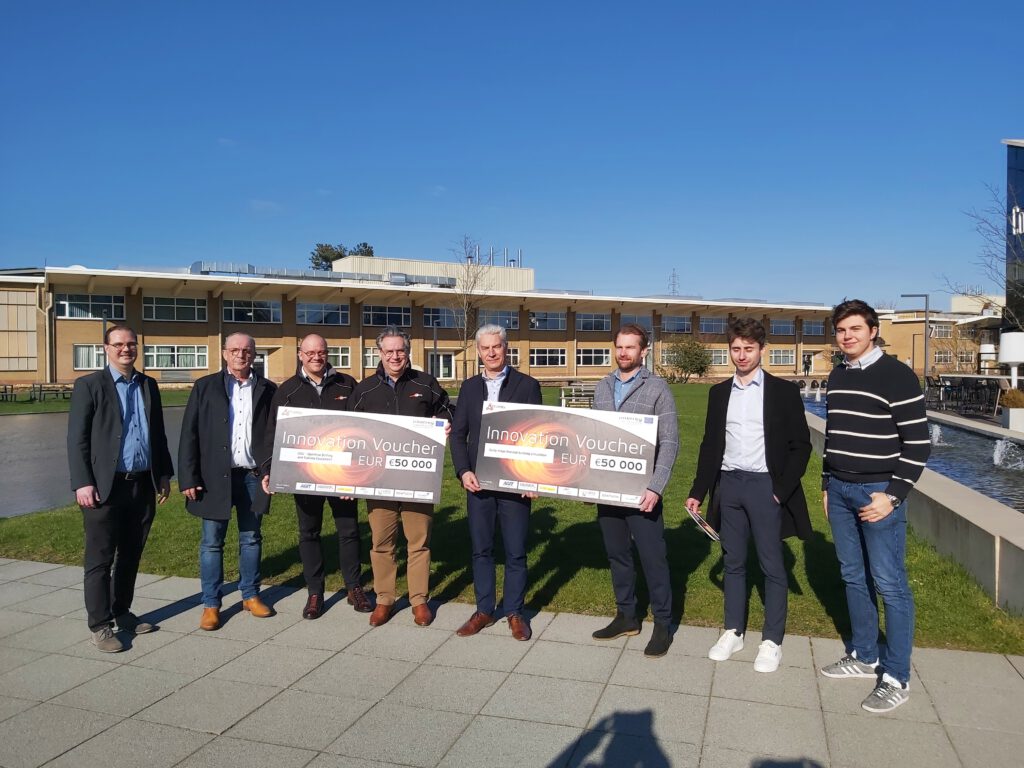
Two medium-sized companies from Aachen and Stolberg were delighted: now that the funding bodies from the Euregio Meuse-Rhine have given the green light to support their cross-border research and development projects, they too can get started: The regional economic development agency AGIT, together with POM Limburg, Hasselt, presented vouchers No. 10 and 11, each worth €50,000, to two innovation projects for the development of new technologies around the Einstein Telescope (ET).
TLK Energy, Aachen, together with its Flemish partner Ingenium, Leuven, is developing a demonstration project on the Einstein telescope, which will focus on early-stage thermal building simulation: The aim is to develop a web-based building simulator for early project phases with a user-friendly building information model (BIM). “There are simulation tools that offer BIM import,” Dr Manuel Gräber, Managing Director of TLK Energy, explains the cross-border R&D project, “They are either good at graphics (BIM) or simulation (physical modelling). So far, however, there are no tools on the market that support both areas equally in a really professional way.”
The second innovation project is being tackled by DIRKRA Sondermaschinenbau, Stolberg, and INTERBORING, Zonhoven (B): The project in the field of drilling and sawing technology is aimed at designing and building a flexible enclosure for drilling and cutting work that can be reused after the work process has been completed. “Until now, such protective devices have been custom-made and only used once,” says Dirk Krahe, DIRKRA Managing Director, explaining the joint project: “Ultimately, a waste of raw materials and anything but ideal from a sustainability point of view. That’s why we want to set an innovative exclamation mark here!”
13.01.2023
Preparations for the Einstein Telescope are in full swing – Ninth innovation voucher for Euregional SMEs
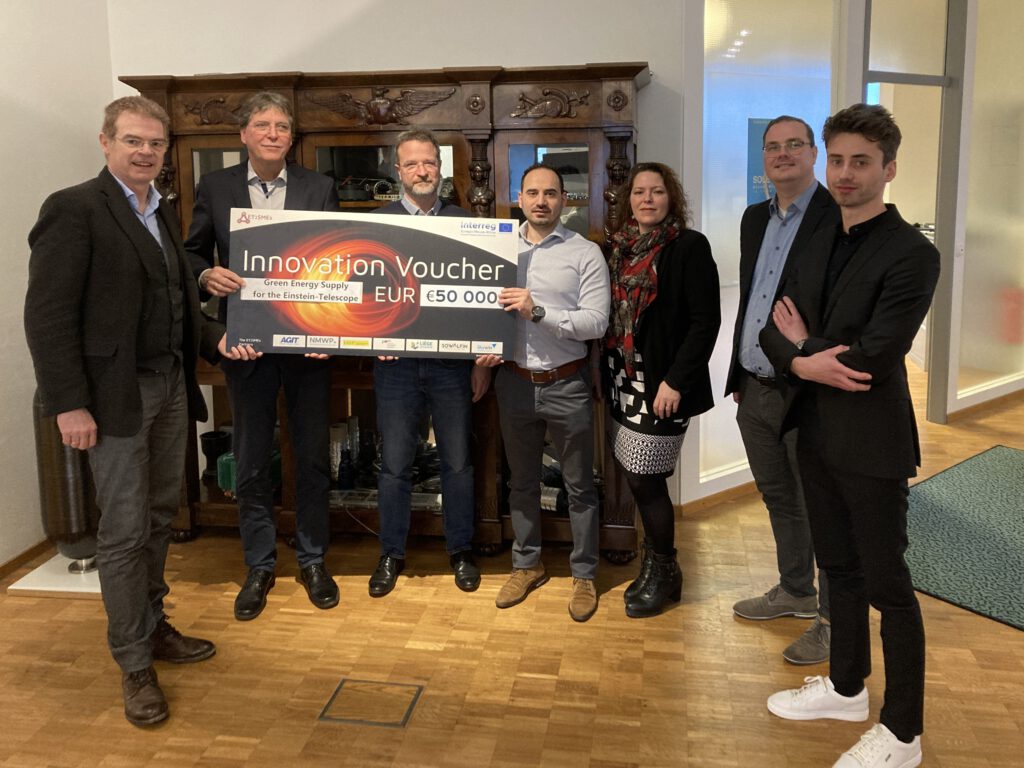
Aachen Region / Euregio, 13.01.2023 – The German-Belgian development project in the technologies of the Einstein Telescope (ET) by ISATEC GmbH in Aachen and YPTF Engineering BV from Hasselt (B) has received one of the vouchers worth 50,000 euros. This enabled the regional economic development agency AGIT to support another medium-sized company from the Aachen region as part of the ET2SMEs funding initiative. With ET2SMEs, the participating partners from the Euregio and the European Union promote the development of innovative applications of small and medium-sized enterprises in technology fields related to the new Einstein telescope, for the construction of which the three-country region is a promising applicant.
Under the title “Green Energy Supply for the Einstein Telescope”, ISATEC and YTPF Engineering are jointly developing a modelling framework for a safe, reliable and ecologically sustainable energy supply, a new method that will be applied to the Einstein Telescope for the first time. The simulations required for this will be designed in such a way that transferability to comparable energy systems in other application areas is also possible. By combining optimal energy sources and storage, the aim is to create a steady, average availability of surplus energy over a longer period of time.
“The fact that we are now able to award one of the ET2SMEs innovation vouchers around the Einstein telescope for the ninth time makes it clear how great the interest of euregional companies in the new large-scale research facility is,” emphasises Ralf P. Meyer, head of the ET2SMEs project at AGIT. “We are particularly pleased that a company from the Aachen region is involved for the sixth time.”
ISATEC Managing Director Dr Ernst A. Werner underlines: “We are very much looking forward to this exciting new R&D project. Above all, however, we would like to thank AGIT and its euregional partner POM Limburg for bringing us together with YPTF. We would be delighted if, due to our complementary skills, we could further expand our collaboration in the future.”
Both ISATEC and YPTF have extensive backgrounds in simulation technology. YPTF’s detailed simulations are used to derive the required characterisation of the individual components of the power system, while ISATEC simulates the energy flows of the overall system.
Other News / Events
9 February 2024
ETpathfinder and E-TEST welcome foreign interest in Einstein Telescope
What opportunities does the Einstein Telescope offer to European researchers and companies? Representatives of the French Ministry of Higher Education and Research paid a working visit to Liège and Maastricht to be informed.
The Einstein Telescope is a globally unique scientific project that can measure gravitational waves deep below the ground with unprecedented precision. This will bring new insights into the universe and life on Earth, and it will also be of great importance for the economy, for innovations in society and for the jobs of scientists and professional skilled workers.
No wonder Belgium, Germany and the Netherlands hope to realise this underground research facility in their border area, the Euregio Meuse-Rhine. Besides the Euregio Meuse-Rhine, the Italian island of Sardinia is also in view as a possible location for the Einstein Telescope. The decision on the location of the observatory will not be made until 2026 by all countries participating in the project.

To bring the Einstein Telescope to the Euregio Meuse-Rhine, many preparations have already been started. There is a lot of interest in this. On 1 and 2 February, three experts from the French Ministry of Higher Education and Research (MESR) were invited to Liège and Maastricht to discuss the Einstein telescope project and the Euregio Meuse-Rhine’s candidacy. Questions that were discussed were: how is the project organised, how does decision-making work and how can researchers participate? And what opportunities are there for companies to contribute with high-quality technology?
The construction of the telescope requires a lot of high-quality technology, which often does not yet exist. Lasers, mirrors and extreme cold technology, for example. Also, the conditions must be perfect, so as not to disturb the measurements. For example, the tunnel must be dug perfectly, and the pressure and humidity in those tunnels must be just right. A big technical challenge.
“We had a lot of discussions with the many players involved in this complex project supported by the Euregio Meuse-Rhine, and were impressed by their dynamism and enthusiasm,” emphasised Frédéric Ravel, director of the energy, sustainable development, chemistry and processes sector at the MESR.
Jean-Luc Biarrotte, scientific adviser for research infrastructures, was delighted to note that “the strong European impetus for gravitational waves, already firmly established by EGO-Virgo, is continuing unabated and holds great promise for the coming decades”.
“The visit to the laboratories behind pioneering projects such as ETpathfinder and E-TEST was very interesting, and enabled us to take stock of concrete scientific and technological advances,” added Susanna Gota-Goldmann, Deputy Head of the Major Research Infrastructures Department.




During their visit, the French delegation looked at the international testing facility ETpathfinder in Maastricht and the research centre for aerospace at the University of Liège and the company Amos, where technology for the Einstein Telescope is being developed. They also spoke with representatives of the German state of North Rhine-Westphalia, which is partner in the EMR candidate alongside Belgium and The Netherlands. Regional investment companies finally talked about the growing network of companies developing technology for the research facility.
“We notice that the Einstein Telescope and its high-quality technology appeal to the imagination, there is a lot of enthusiasm and a lot of knowledge in this region,” says Martijn Poel, MT member at the Research and Science Policy Directorate of the Dutch Ministry of Education, Culture and Science. “During this visit, it was about the joint approach of all research institutes, companies and governments in the region towards a candidacy. Other countries are very welcome to work with us on this international project”.
Source & Image : Einsteintelescope.nl
27.11.2023
Investigation into environmentally friendly logistical solutions

Is it possible, during the construction of the Einstein Telescope in the border region of Belgium, the Netherlands, and Germany, to transport a large amount of soil and materials in a different way than by truck? Could the railway be used in this regard? If so, could the railway junction in Montzen, Wallonia (municipality of Plombières), play a central role?
This is the core of an investigation currently being carried out by the project office Einstein Telescope EMR. The project office is in discussion with the Belgian rail manager Infrabel and the Belgian railway company NMBS. The municipality of Plombières has also been informed about this and is, in principle, not opposed to the idea. The same applies to the Walloon government in Namur. This has created an opportunity to conduct research on this matter. Based on the results, final decisions can then be made.
Caring for the landscape
Project leader Guid Bartholomée: “Naturally, we are working on plans for a construction phase in which we want to cause as little disruption to the environment as possible. We feel obliged to be careful with the landscape and nature. Sustainability also plays a major role in what we are investigating. When it comes to the logistical aspect of that story, you almost automatically consider transportation by rail. In that exploration, the Montzen depot quickly comes into view.”
Constructive
The train station and the Montzen depot are very lightly used. According to Guid Bartholomée, it is still too early to estimate whether it will be possible to use the Montzen depot for logistics and in what way that could be: “We have had good, constructive discussions with Infrabel and NMBS. They think along in a positive way. But there is still some mapping to be done before we can take the next step.”
Next steps
The research into logistics, however, does not provide information about the locations for the three corner points of the Einstein Telescope. The locations for those three corner points will be determined after further geological research of the soil, among other things. In 2025/2026, a decision will be made at the European level on where the Einstein Telescope will be built. In addition to the border region of Belgium, the Netherlands, and Germany, the Italian island of Sardinia is also advocating for this. The construction phase is planned from 2028 to 2035.
Source & Image: Einsteintelescope.nl
22.11.2023
Belgium puts Einstein Telescope on European agenda
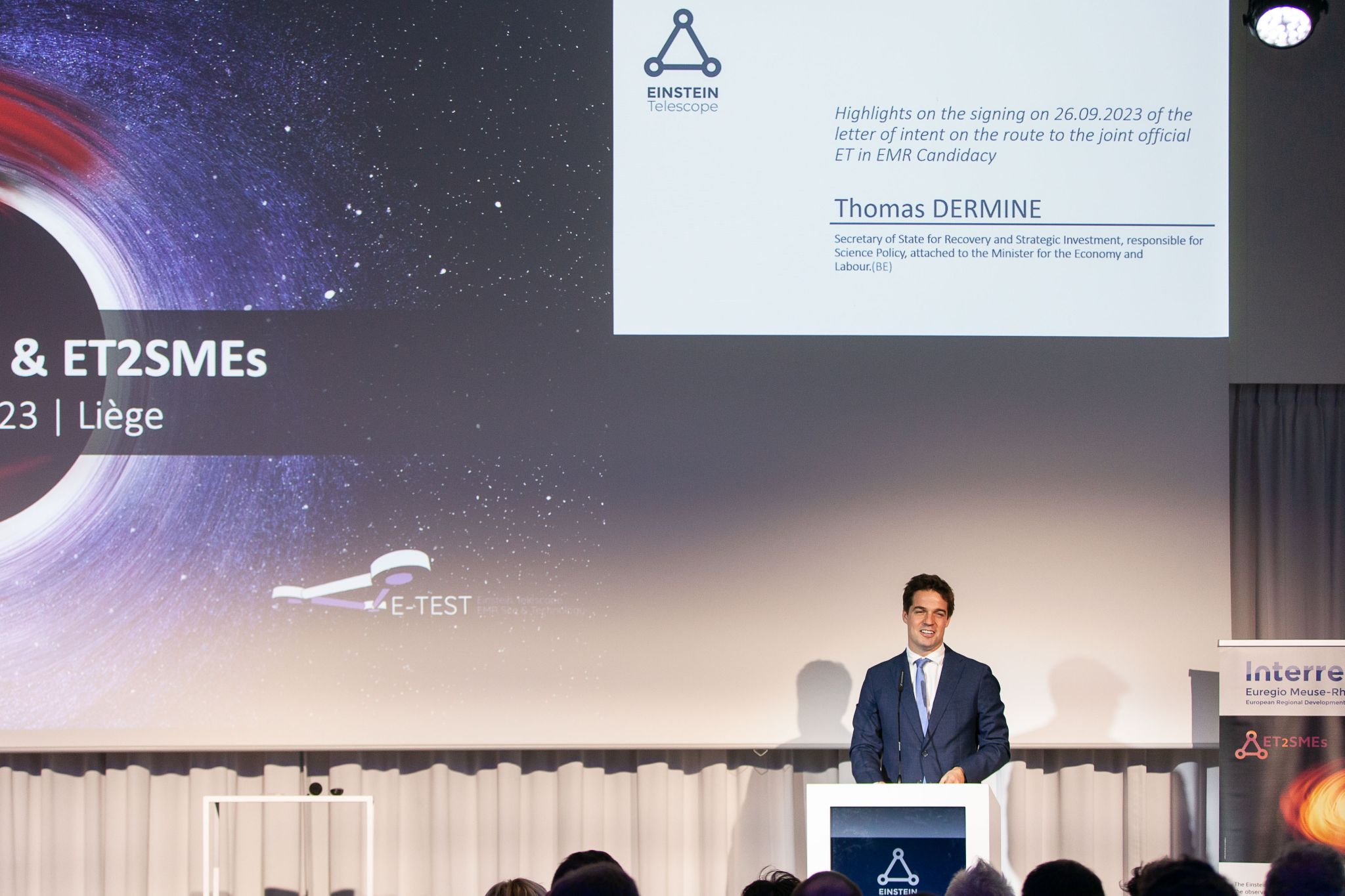
Belgian Secretary of State for Science Policy Thomas Dermine aims to use the Belgian EU presidency in spring 2024 to put the EMR candidacy on the European agenda. Belgium is thus taking a new step to host the Einstein Telescope in the Euregio Meuse-Rhine, together with the Netherlands and Germany.
This was announced during the kick-out meeting of two preparatory research projects, E-TEST and ET2SMEs, in Liège on November 21, 2023. Willy Borsus, the Walloon Minister of Economy, also announced that the collaboration with companies from ET2SMEs will continue in 2024.
Attractive
The European Einstein Telescope will be a world-class underground observatory that scientists will use to study the universe in a completely new way. This can be done by listening to gravitational waves, minute ripples in the fabric of the universe that arise during the most extreme events such as colliding black holes. In this way, researchers even want to listen back to the ‘cosmic dark ages’, the period before the first stars ignited.
The host country for the Einstein Telescope will acquire a European top center for scientific research. This not only attracts scientists but also high-tech companies eager to prove themselves by developing technology for the Einstein Telescope.
Belgium, the Netherlands, and Germany are already preparing a joint candidacy to host the observatory in their border region, the Euregio Meuse-Rhine. This area not only offers the Einstein Telescope a unique, vibration-damping soil but also excellent infrastructure and a network of research institutions and high-tech companies.
The Italian island of Sardinia is also in the running to build the Einstein Telescope. The decision on the observatory’s location will be made around 2026 by European governments.
Preparing the Candidacy
To make their candidacy for the Einstein Telescope as strong as possible, the three neighboring countries are closely collaborating. As a result, it was announced on November 21 during a meeting in Liège to close the two cross-border programs E-TEST and ET2SMEs. These programs, funded by Interreg, prepared researchers and businesses in the three neighboring countries for the arrival of the Einstein Telescope.
Within E-TEST, soil research was conducted to map the underground in the search area for the Einstein Telescope. These studies will continue in 2024 with a series of boreholes in the search area. E-TEST also developed a prototype of the cryogenic mirrors for the Einstein Telescope. The mirror will be tested in 2024 in a new vacuum setup at the Liège Center for Space Research (CSL).
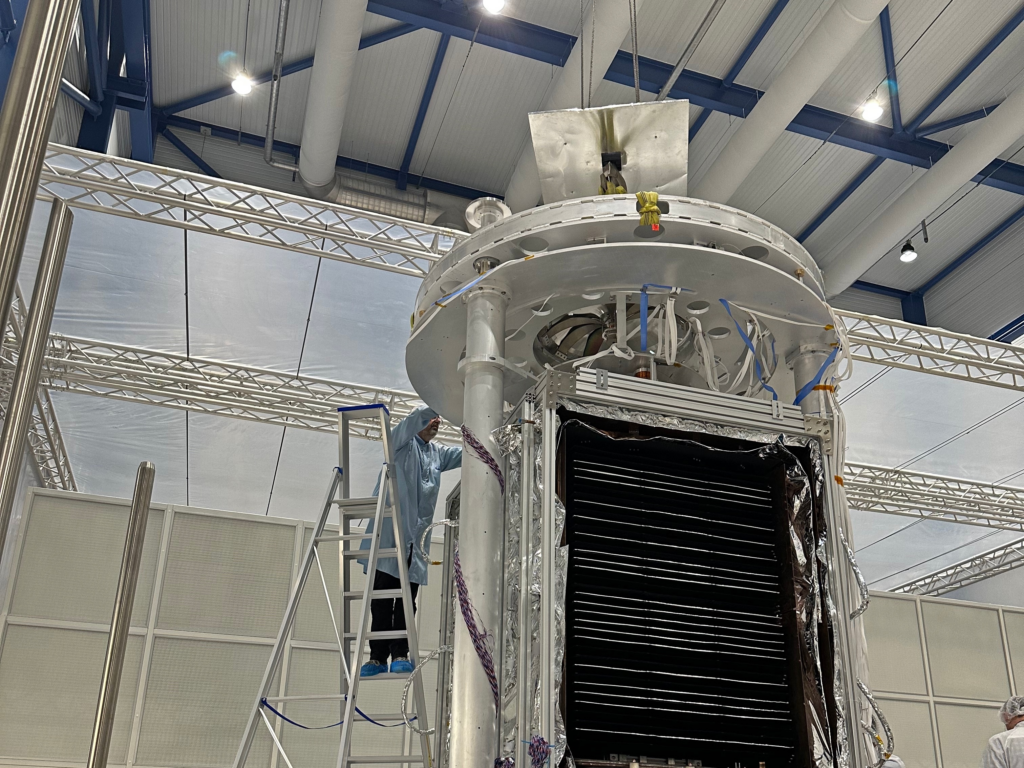
Prototype spiegel voor de Einstein Telescope. Bron: CSL / ULiège
Collaboration with the Business Sector
Joint projects allow researchers and companies to gain experience with the technology that will be used in the Einstein Telescope. This means better chances of securing contracts during the construction phase and opportunities for spin-off technology. Therefore, the ET2SMEs program organized workshops to inform small and medium-sized enterprises about the opportunities and challenges of the Einstein Telescope.
Thanks to vouchers from ET2SMES, a total of 23 companies in 11 joint projects developed sub-technology for the Einstein Telescope. The 9 Belgian, 6 Dutch, and 8 German companies worked on production methods for the vacuum tubes of the Einstein Telescope and built equipment for dust and leak detection. Electric vibration equipment for soil research without CO2 emissions was also developed.
The collaboration with companies from ET2SMEs will continue in 2024 with subsidies from the Walloon government, it was announced on November 21. A new valorization committee will also be established to stimulate knowledge transfer.

Detection method for dust particles. Source: SAC Netherlands, PDM, M3engineering, VAMAC NV

Electrically powered source for seismic research without CO2 emissions. Source: Seismic Mechatronics, Battery Pack Service

Development of production method for vacuum tubes. Source: FEF GmbH, Werkhuizen Hengelhoef, Aperam, RWTH Aachen University
Administrative Cooperation
During the meeting in Liège, discussions also revolved around administrative cooperation, which has taken shape in the form of ministerial tables and a task force. Feasibility studies are led by the Einstein Telescope project bureau – Euregio Meuse-Rhine. Collaboration in the field of R&D and valorization is outlined in an R&D agenda and a valorization expert committee.
Written by Gieljan de Vries
Source & Image : Einsteintelescope.nl
17.11.2023
Millions support from German Bundestag for Einstein Telescope
The German Bundestag decided on November 17 to allocate 9 million euros for the planning and feasibility study of the arrival of the Einstein Telescope. This was reported by the German SPD Bundestag member Ye-One Rhie in a press statement. For 2024, 3 million euros have been reserved, and for 2025/2026, 6 million euros.
“The Euregio Meuse-Rhine, located at the tripoint of Germany, Belgium, and the Netherlands, is the most likely and best location for the Einstein Telescope. As a member of the Bundestag in this region, I am very pleased with the support of the German Bundestag for this globally significant research project. Thanks to the excellent scientific and research landscape and the Euroregional location, the Euregio Meuse-Rhine provides optimal conditions for groundbreaking European research such as the Einstein Telescope”, Rhie says this in its statement.
Read the press release (in German)
Source : Einsteintelescope.nl
15.11.2023
ERT measurement in Wallonia provides additional information on subsurface
You have to look very closely to see it: an orange cable with an electrode the size of a tent peg every 50 meters. At this moment, a so-called long ERT measurement is taking place in the rural areas of the Walloon municipalities of Aubel, Herve, and Dalhem.
The letters ERT stand for ‘Electric Resistivity Tomography.’ This is an electrical resistance measurement used to further map the structure of the soil. Along the entire 7-kilometer measurement route, a 5mm thick cable is manually laid. An electrode is attached to it every 50 meters. The researchers generate a weak electric field in the subsurface for a short period. This way, the electrical resistance in the subsurface is measured.
This measurement is carried out by the University of Liège and is part of the E-TEST project, intended for the Einstein Telescope. It involves a route along the Berwinne River from Thimister-Clermont through Val-Dieu to near Mortroux.
Source & Image: Einsteintelescope.nl
10.11.2023
Walloon municipalities visiting the ET Pathfinder

At the invitation of the Einstein Telescope EMR project office, delegations from the Walloon municipalities of Plombières, Welkenraedt and Aubel visited the ET Pathfinder on 9 November.
The mayors and aldermen were updated on the developments surrounding the Einstein Telescope and on the ET Pathfinder by Marc Genten of the Euregio Meuse-Rhine, by Bjorn Vink of the Einstein Telescope EMR project office and by directors Jean-Christophe Peterkenne and Chloé Beaufays of GRE Liège.
Source & Image: Einsteintelescope.nl
23.10.2023
Cabinet takes next step towards Einstein telescope in the Netherlands
Lasers, mirror technology and vibration-free chillers. These are 3 examples of innovative technology needed for the construction of the Einstein Telescope. As of today, companies can register for a subsidy to develop and test this type of technology, minister Dijkgraaf announced today. The government is taking the next step to bring the Einstein Telescope to the Netherlands. The arrival of the telescope is not only important to gain more knowledge of gravitational waves, but is also of great importance for the sustainable growth of Dutch science and our economy.
Super telescope
The Einstein telescope is actually not a telescope like many people know to look at the stars with. It is a triangle of tubes, each 10 kilometers long, several hundred meters deep in the ground. Laser beams are fired into the tubes, and reflected back with mirrors. By measuring very precisely where the laser beams deviate, scientists can detect gravitational waves from space. This gives scientists more insight into the birth process of black holes, the structure of neutron stars, and the nature of the universe immediately after the Big Bang. The scientists also want to test the predictions of Einstein’s theory of relativity. This provides new insights into our universe. The telescope is therefore of great importance for international physics and astronomy.
A lot of technology needed
The construction of the telescope requires a lot of high-quality technology, which often does not yet exist. The lasers, the mirrors and extreme cold technology, for example. Also, the conditions must be perfect, so as not to disturb the measurements. For example, the tunnel must be dug perfectly, and the pressure and humidity in those tunnels must be just right. The environment must also be vibration-free. There is no place for windmills in the immediate vicinity. And the cooling installation that is needed, for example, should not vibrate at all, not even a little bit. A major technical challenge.
Business in the starting blocks
The government wants to encourage companies to start developing this new technology now. That is why companies can receive subsidies for the development and testing of innovations that are needed in the construction of the telescope. A total of € 12 million is available.
Minister Dijkgraaf: “I would love to bring the Einstein telescope here. The value of such a telescope for science and our economy can hardly be expressed in monetary terms. With this subsidy I want to kill two birds with one stone. By investing now in the knowledge and technology we need, our plan will become stronger, and we will increase the chance of building the telescope here. We also drive innovations, which is good for the economy, employment and knowledge position.”
Great value
The arrival of the Einstein telescope would mean a lot for Dutch science and for the region. Such a telescope is also expected to attract a lot of (local) activity and work for scientists, hbo’ers and MBO’ers. Construction is required, maintenance is required and companies must supply technology. Because the telescope is positive for the Dutch earning capacity in the longer term, the project received € 42 million from the National Growth Fund. The budget for this scheme comes from this € 42 million.
Within the Netherlands, the Ministry of Education, Culture and Science, the Ministry of Economic Affairs and Climate, the province of Limburg, Nikhef and LIOF are working hard to bring the telescope to the border region of the south of the Netherlands. Among other things, they carry out various feasibility studies, conduct research into geology and set up cooperation with Germany and Belgium. The government has also set aside € 870 million from the National Growth Fund to finance part of the construction.
Whether the telescope will actually be built in the border area of the Netherlands, Germany and Belgium, Europe is expected to determine in 2026. Italy is also working on a proposal to build the telescope. The telescope is planned to be built in 2030.
Companies can submit their application to the Regional Development Agency for Limburg (LIOF). For more information, see First opening of Einstein Telescope R&D scheme to high-tech companies.
04.10.2023
Deutsches Zentrum für Astrophysik and Nikhef: Intensive research collaboration
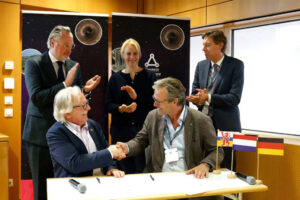
Specifically, the partners intend to come up with joint proposals for new projects. The partnership should also prevent more or less the same scientific efforts being made in the two places.
Nikhef is the scientific partner within the project office working on the feasibility of the Einstein Telescope in the border area of Germany, Belgium and the Netherlands (Meuse-Rhine Euroregion). DZA will build an institute for astrophysics, technology and digitisation in Saxony, Germany.
Signing
How the cooperation will take shape will be discussed in the near future. Building on the success of the DZA and Nikhef projects, other European institutes may also join. This agreement of intent is separate from the feasibility study for the candidacy for the Einstein Telescope in the Meuse-Rhine Euroregion.
The signing of an Intention of Cooperation took place today in Munich during a meeting on the Einstein Telescope at the international fair Expo Real organised by the Province of Limburg (NL). On behalf of DZA, Prof. Günther Hasinger, initiator of the DZA, signed the agreement of intent. Prof. Stan Bentvelsen signed on behalf of Nikhef. Stan Bentvelsen is director of Nikhef and scientific director of the Einstein Telescope EMR project office.
Technology development for the Einstein Telescope is one of the key early projects for the new German Center for Astrophysics (DZA). We are therefore very happy to sign this cooperation agreement with Nikhef as one of the leading institutions supporting the ET.
Prof. dr. Günther Hasinger – Deutsches Zentrum für Astrophysik (DZA)
What we are signing today is a logical step in the scientific cooperation we already have with many colleague institutes from Nikhef. The collaboration with our German colleagues means we can share a lot of knowledge and develop it together. This collaboration makes us stronger and is going to help Nikhef realise our ambitions for the Einstein Telescope.
Prof. dr. Stan Bentvelsen – Nikhef
Germany’s role is an important one for the Einstein Telescope in the Meuse-Rhine Euroregion. Cooperation at this high scientific level is therefore also of great importance on the road to a strong bid book and ultimately, in a few years, the choice of this Euroregion as the location for the Einstein Telescope.
Regional Minister Stephan Satijn – Provincie of Limburg (NL)
Deutsches Zentrum für Astrophysik
The DZA is a joint initiative of astronomy and astroparticle physics in Germany, supported by the major German scientific organisations. In September 2022, the DZA was given the green light to build in Saxony a large-scale research centre with a future-oriented scientific programme, a centre for digitisation that will bring together data streams from astronomical observatories around the world. The building up of the DZA started this year and it will reach its full size by 2035. After the start-up phase, annual funding of around €170 million is planned for the final stage with more than 1,000 people employed.
Nikhef
Nikhef is the National Institute for Subatomic Physics in the Netherlands, providing answers to major physics questions of our time. Scientists and technicians work together to find new answers to these questions. Nikhef is based in Amsterdam, but much of Nikhef’s research takes place at CERN’s particle accelerator in Switzerland. Nikhef is a partnership between universities in Amsterdam, Maastricht, Groningen and Utrecht and the Foundation for Fundamental Research on Matter (FOM). Research is carried out at Nikhef in the fields of particle physics and astroparticle physics.
19.06.2023
Connecting the small and the large scales
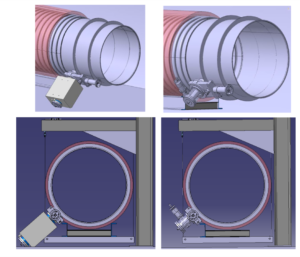
Gravitational waves, like the discovery of the Higgs boson in 2012, have made their mark on a decade of extraordinary discoveries in physics. Unlike gravity, which is created when massive objects leave their mark in the fabric of spacetime, gravitational waves are very weak ripples in spacetime that are caused by gravity-accelerated masses. So far, researchers have been able to detect the gravitational waves produced by the melting together of very heavy objects, such as black holes or neutron stars. When this happens, these echoes from the past reverberate through the whole Universe and finally reach Earth, allowing us to piece together what happened millions of light-years ago.
Current gravitational-wave observatories can only detect a few gravitational waves as they cover just a narrow spectrum of the whole range of wavelengths that are emitted. Future gravitational-wave observatories, such as the Einstein Telescope, a CERN-recognised experiment, need to be larger in order to search for a larger bandwidth of gravitational waves that could tell us more about the Universe.
A key ingredient of future gravitational-wave observatories is ultra-high vacuum technology. As the world-leading R&D facility for applications in this field, CERN is one of the few places where people know how to build very long ultra-high vacuum systems. CERN’s decade-long experience of installing complex and ultra-pure vacuum systems underground is an additional benefit for the Einstein Telescope since it will be installed at least 200 metres below the Earth’s surface. The lead institutes of the Einstein Telescope Collaboration therefore entered into a collaboration agreement with CERN in 2022. Building on this agreement, a workshop was held in March 2023 dedicated to brainstorming on how these systems might look and which materials would work best. The Collaboration hopes to complete a prototype vacuum pipe by the end of 2025. The findings from the workshop will help to reduce not only the cost of building the Einstein Telescope but also potentially the cost of future accelerators.
“The expected sensitivity of the Einstein Telescope will be at least a factor of ten times that of Ligo-Virgo,” says Michele Punturo, who began his career as a physicist at CERN and is now the spokesperson of the Collaboration. “Its low-frequency sensitivity will allow us to detect intermediate mass black holes.”
The Einstein Telescope is designed to measure gravitational waves ten times more precisely than existing gravitational-wave detectors and will complement future space-based gravitational wave detectors. The experiment will send a laser beam down into the 120-km-long triangular-shaped tunnel. This beam will be then split into two beams, which are reflected by mirrors. The length of the tunnel has been chosen so that the two laser beams precisely cancel each other. If a gravitational wave crosses the laser signal, it will be perturbed, thus leaving behind an imprint of itself. The nature of this imprint will provide researchers with information about the event that created the gravitational wave in the first place.
Due to the high precision of the signal, the vacuum system in which the laser operates needs to be not only ultra-pure, but also free from vibrations as well as electromagnetic contamination, since both can mimic the signal from the incoming gravitational wave.
Another potential source of modification of the gravitational wave frequency is dark matter, the elusive form of matter that seems to make up most of our Universe. Theorists are already working on models to verify whether a recorded signal could be influenced by dark matter. These searches would complement the searches for dark matter that are currently being carried out in collider and fixed-target experiments at CERN.
Watch a video with Michele Punturo, the spokesperson for the Einstein Telescope Collaboration:
Video interview with Michele Punturo, spokesperson for the Einstein Telescope Collaboration (Video: CERN)
14.07.2023
Additional budget for E-TEST project granted
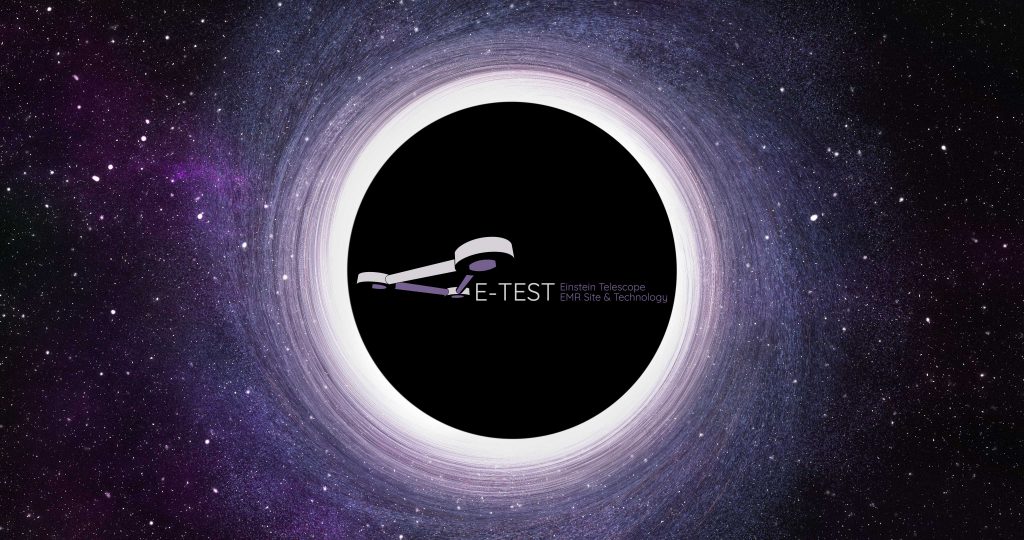
With Covid crisis, the large unseen inflation rate and supply chain issues, the E-TEST consortium had to deal with a lot of troubles and challenges since the project start on Februart 1st 2020. The project partners requested additional budget to overcome these challenges, to validate the mirror prototype at the CSL ULiège and to take the opportunity for enhanced geological investigations. By conducting more thorough geological testing future risks in construction costs can be mitigated.
The Interreg EMR Monitoring Committee has now approved an additional budget of 1.219.774,98 €, allowing the consortium to accomplish the foreseen goals. This additional budget will enhance the preparation of the ET site in the BE-NL-DE border region!
In the name of the whole project consortium we want to thank the Interreg EMR Programm and the co-funding regions for granting us the additional budget and showing support to our major Einstein Telescope preparatory project!
The Financiers:
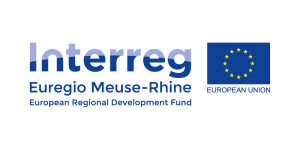
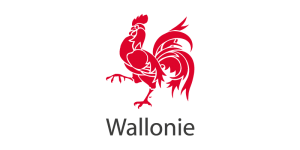
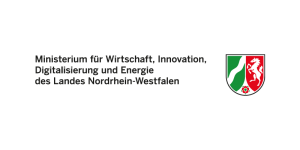
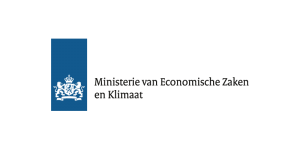
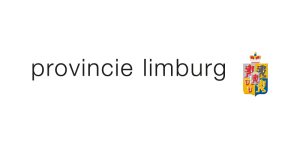
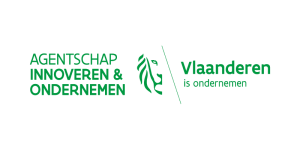
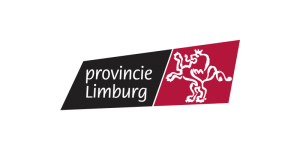
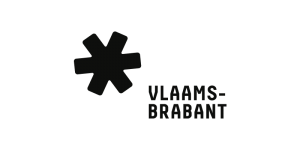
11.07.2023
25 million investment for the Liège Space Centre
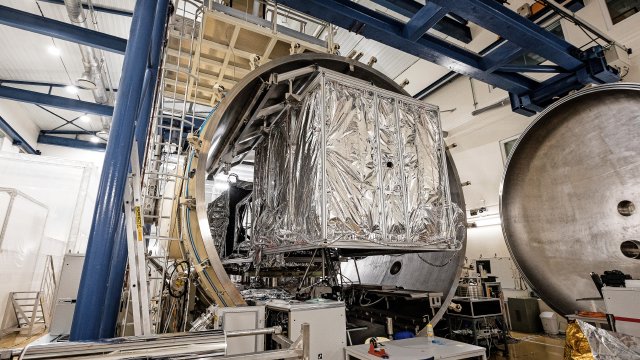
Years in the making, the project to modernise the Liège Space Centre is finally complete. But the difficulties of a subcontractor will once again weigh on the timetable.
Years in the making, the plan to develop and modernise the Liège Space Centre (CSL) is nearing completion. Last week, the board of directors of this spearhead of the space industry in Wallonia gave its agreement in principle to a €25 million investment programme financed jointly by the Walloon Region, the federal government and its own funds, while paradoxically freezing the launch of procedures.
The aim? To equip the CSL with the largest vacuum tank in Europe, enabling it to carry out optical calibrations of future spaceflight, scientific and Earth observation instruments in the ultra-cold thermal environments required (approaching absolute zero). The new instrument will be 7 metres in diameter and 12 metres deep. It will be equipped with an optical bench, a kind of table placed on a seismic slab fitted with air cushions that will filter out all external vibrations.
At present, the Centre’s largest vacuum tank is 6.5 metres in diameter. It was used for 60 days to carry out tests on the Euclid space telescope, which has just been launched into space. According to CSL officials, this was an operation that had to be carried out to the nearest centimetre, given the size of the satellite. Future missions currently under development, notably within the European Space Agency (ESA), will require even larger test equipment. The tank will be financed to the tune of 8.8 million by the Walloon Region. For its part, the federal government (Science Policy) will provide 12 million for the construction of the buildings, in particular the new ultra-clean 1,000 m2 clean room that will house the tank. The CSL and ULiège, to which the centre belongs, will provide the remainder, to which a small contribution from another funding mechanism will have to be added.
Difficult Times
This major investment has been under discussion for over four years. It has not been easy to complete, especially as the Centre has gone through some difficult times in recent years, with a management crisis and several years of losses, due in particular to the delay caused by the pandemic. To make matters worse, as with other projects, the covid crisis, inflation and the war in Ukraine caused estimates to soar. “We had to demonstrate that we had a real business plan and that this investment was necessary for CSL,” explains Christophe Grodent, the Centre’s Commercial Director and a member of the management committee that has been running the centre for almost two years. This quartet also includes Serge Habraken (Chairman), Benoît Marquet (Operations Director) and Yvan Michelson (Finance and HR Director).
Judicial reorganisation procedure
But there is one final snag, which may well add a few more months to the project. The company that responded to the call for tenders to supply the vacuum vessel, Ateliers de la Meuse, is going through a tricky phase. The Liège-based company, which specialises in the manufacture of large welded mechanical parts, has applied to the Liège company court for a judicial reorganisation procedure (PRJ). The company, which in the past supplied CSL’s other vacuum vessels, is experiencing cash flow difficulties, despite the injection of new financial resources (nearly €3 million) in July 2021. This is a paradoxical situation, given that there is no shortage of customers and orders, and the company is even looking to recruit staff.
“However, it was the only company that responded to the call for tenders”, Christophe Grodent continues. The Board of Directors therefore decided to freeze the entire procedure until the outcome of the PRJ was known, which will lead to a recapitalisation of Ateliers de la Meuse. This constraint means that orders cannot be placed for the time being, and the university has asked all the other bidders to extend their bids until the end of the PRJ.
An outgrowth of ULiège, the CSL has over the years become one of the flagships of the Belgian space sector, both in terms of research and industry, in partnership with the companies in the sector that gravitate around the University of Liège. The Space Centre, which is both a research centre and an industrial facility, has a turnover of around €18 million. It made losses on a number of occasions up until the pandemic, but is now gradually returning to profitability.
Written by Olivier Gosset
22.06.2023
Visit by ambassadors
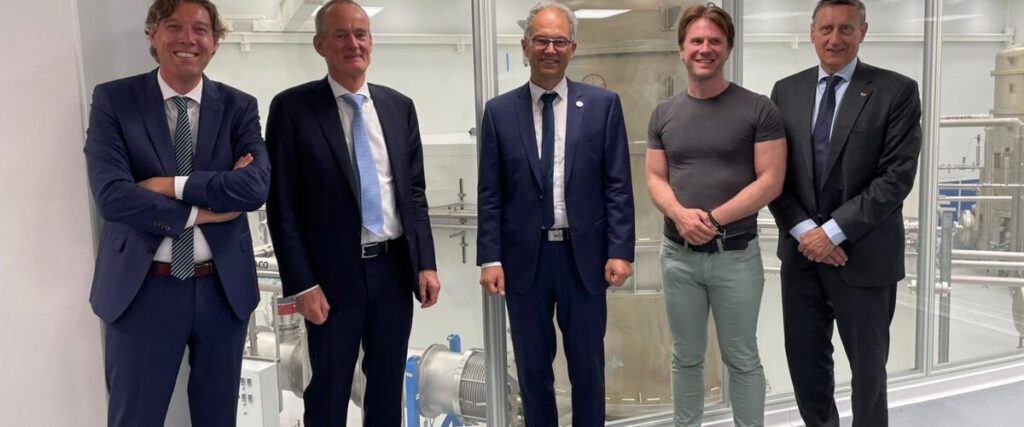
The opportunities offered by the Einstein Telescope, especially also for the Meuse-Rhine Euroregion. That was one of the themes during the visit of the German ambassador to the Netherlands and his Dutch counterpart in Germany to the Einstein Telescope project office and the ET Pathfinder.
German ambassador Cyrill Jean Nunn and the Dutch ambassador to Germany Ronald van Roeden had extensive information about this during their working visit to the border region.
University lecturer Gideon Koekoek (Maastricht University), professor Achim Stahl (RWTH Aachen) and Guido Derks (director of the Einstein Telescope project office) explained the ET Pathfinder as R&D centre for the Einstein Telescope and the telescope itself. They focused on the opportunities for this Euroregion and the importance of cooperation across borders.
Photo from left to right: Guido Derks, ambassador Ronald van Roeden, Achim Stahl, Gideon Koekoek and ambassador Cyrill Jean Nunn.
Image: Einsteintelescope.nl
Written by Dewi Andoetoe
18.06.2023
Strong interest from the Benelux Parliament
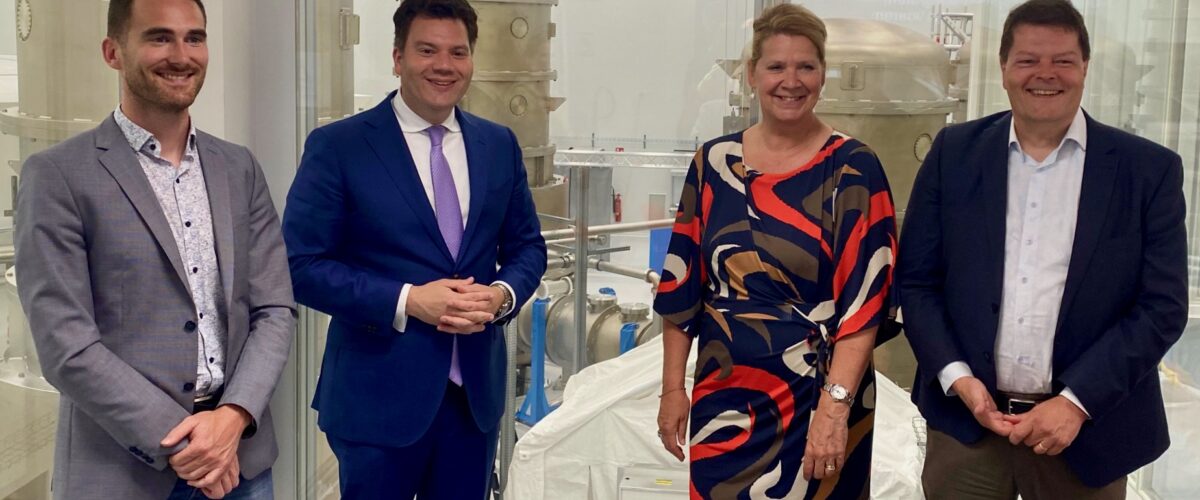
A lot of interest, enthusiasm and relevant questions. This is the best way to sum up the Benelux Parliament’s session on the Einstein Telescope.
The Benelux Parliament consists of people’s representatives from Luxembourg, Belgium and the Netherlands, who discuss, coordinate and highlight cross-border issues in their own countries. The Einstein Telescope is an example of this. It was therefore one of the topics during this parliament’s two-day meeting in Maastricht.
Guido Derks, director of the Einstein Telescope, took the politicians through the latest developments in the current feasibility phase and the steps to be taken in the coming years. Among other things, he referred to a motion passed by parliament a few years earlier endorsing support for the underground observatory. That support remains undiminished, the meeting concluded.
The politicians’ questions to Derks included the dismantling of the Einstein Telescope in 2085, construction methods, support in the area and the relationship between the underground observatory and wind turbines.
Image: Einsteintelescope.nl
Written by Dewi Andoetoe
06.06.2023
Renewed pop-up expo debuts at Nerdland
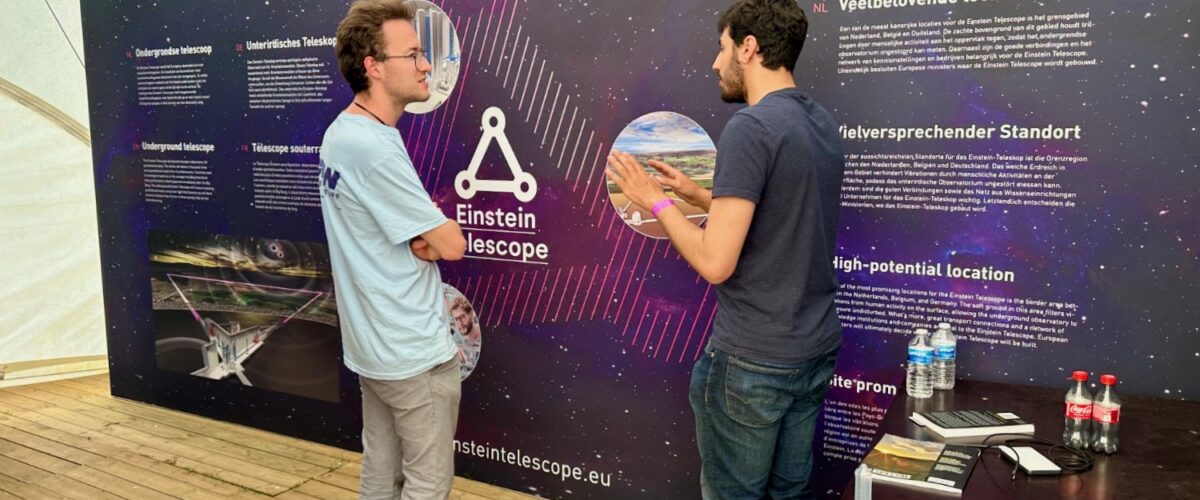
We couldn’t have wished for a better stage for the renewed pop-up expo featuring the film about the Einstein Telescope. The Nerdland Festival in the Flemish town of Wachtebeke recently had the premiere of the “pimped” and internationally updated expo. The film is dubbed in four languages and the information panels have been updated. The expo was located in the tent of the Fund for Scientific Research (FWO) Flanders.
Many of the more than 20,000 visitors had already heard about the plans to build the Einstein Telescope in the border region of Belgium, the Netherlands, and Germany, thanks to a podcast about it that was launched during the first edition of Nerdland a year earlier. Enthusiastic project staff and employees of POM Limburg provided a fresh update for the film.
The Einstein Telescope EMR project office lends the pop-up expo free of charge to organizers of events with an Einstein Telescope connection. However, transport and set-up costs are to be paid by the organisation.
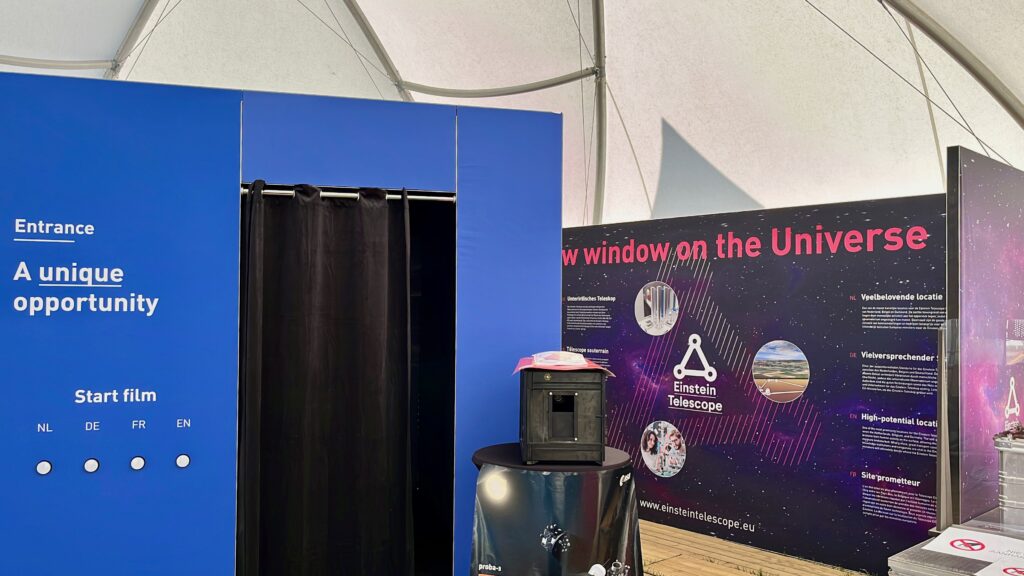
Image: Einsteintelescope.nl
Written by Dewi Andoetoe
Date: Wednesday, 15.02.2023, from 1:30 till 5:30 pm
Location:, Abbaye du Val-Dieu, Val-Dieu 227, 4880 Aubel, Belgium

E-TEST Workshop n° 1:
Life Cycle Assessment
of Groundwater
Renewebility of freshwater can only be assessed at a local (regional) scale. Water consumption should not be confused with water production or withdrawals.
Globally, about 30% of the available and renewable freshwaters are ‘used’ while less than 15% are actually ‘consumed’.
Water shortage are due to the uneven spatial and temporal distributions of freshwater conjugated to inadequate local management.
Water issues are not only quantity problem but also quality problem. Groundwater reserves are 77 x surface-water reserves.
Rigorous LCA analysis and water footprint assessments remain challenging.
13.12.2022
Space research in the border triangle: task force for Einstein telescope launched
NRW state government brings together representatives from the Netherlands, Belgium and Germany.
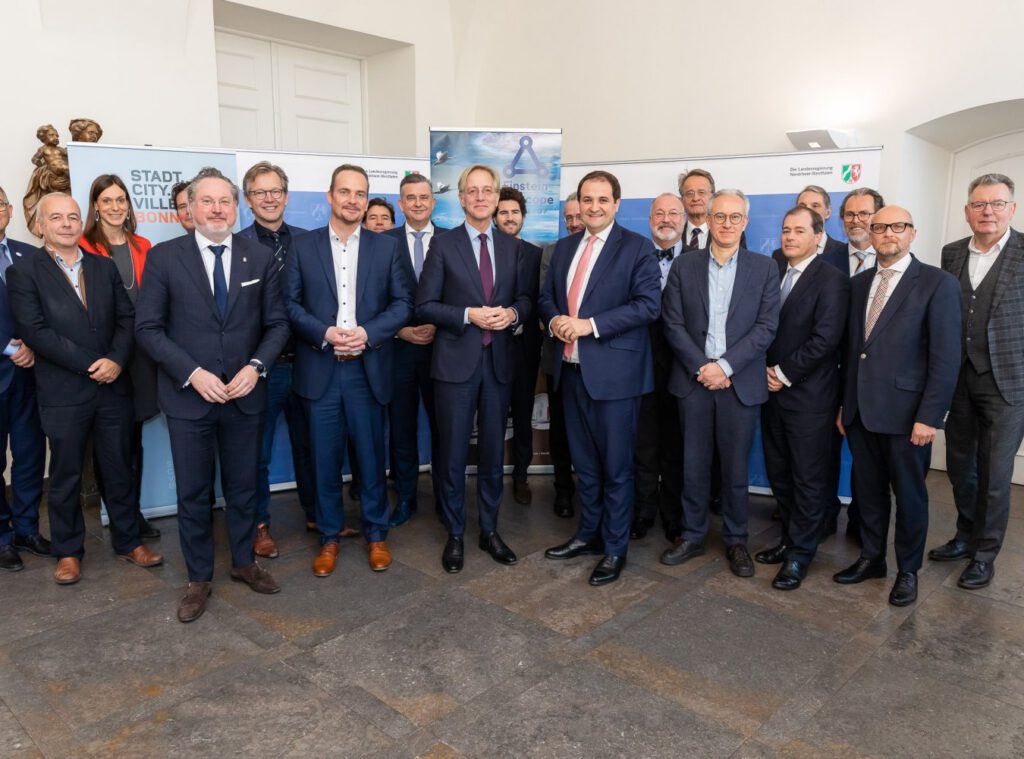
State government brings together representatives from the Netherlands, Belgium and Germany.
Following the invitation of Europe Minister Nathanael Liminski, key political players and scientific representatives from the Netherlands, Belgium and Germany met for the first time on Tuesday, 13 December 2022, at the “Einstein Telescope Round Table” in Bonn. Together, the participants expressed their support for the realisation of the Einstein telescope in the border triangle. The Einstein telescope could create a project of top-level research with international appeal in the Euregio Meuse-Rhine. The third-generation gravitational wave detector would make it possible to study black holes and investigate the time after the Big Bang in more detail.
“The Einstein telescope offers great scientific and economic potential that would benefit the people in the region and strengthen North Rhine-Westphalia as a business location,” emphasises Europe Minister Liminski. “With its strong science and research landscape, the large number of companies with expertise in the high-tech sector and the support of the neighbouring states and regions, the “Dreiländereck” offers ideal conditions for the implementation of this cutting-edge research project. Cross-border, we would send a signal that Europe has the claim to be one of the world’s leading regions for basic research.”
The participants of the round table in Bonn exchanged views on scientific developments, the advantages of the border triangle as a location and the opportunities that the Einstein telescope offers the region. Belgium, the Netherlands and North Rhine-Westphalia are already jointly funding numerous projects in preparation for the Einstein telescope. For example, funding has been provided for a prototype of the Einstein telescope, for geological studies to identify the site and for the support of technology-driven companies.
In order to create all the necessary conditions for an application of the border triangle as a location, the participating countries and regions have decided to set up a “Taskforce Einstein Telescope”. This task force will bring together representatives of all the bodies involved to pool information and identify and prepare further steps for the region’s application.
08.12.2022
Innovation vouchers for Dutch-Flemish collaborations for Einstein Telescope
Within the Interreg EMR project ET2SMEs (Einstein Telescope to Small and Medium-sized Enterprises), innovation vouchers worth €50,000 have been awarded to two Dutch-Flemish collaborations.
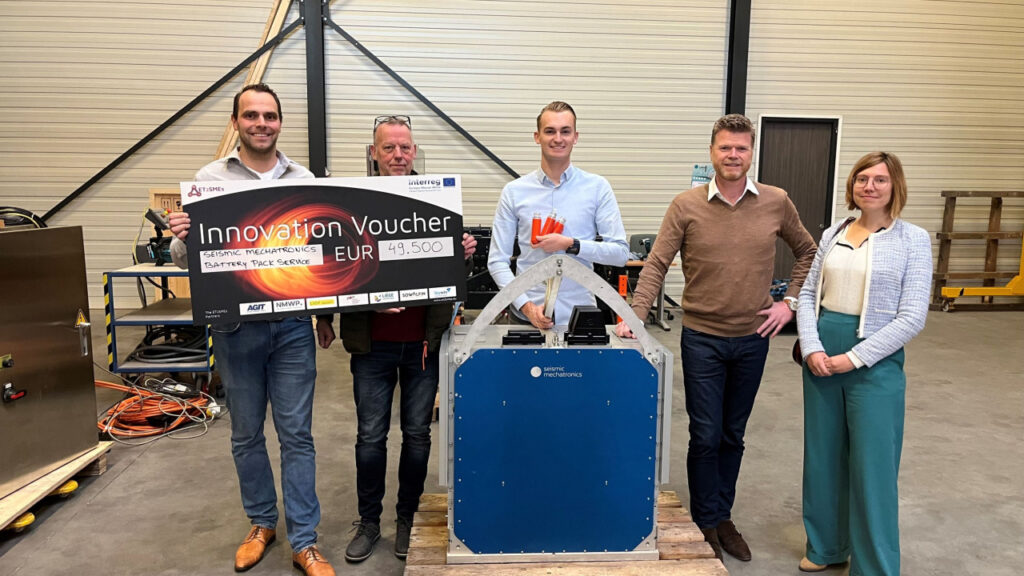
Mobile equipment for soil research
Dutch company Seismic Mechatronics (Veldhoven) and Flemish company Battery Pack Service (Peer) are teaming up to fully electrify mobile equipment for soil research using a modular, customer-specific battery pack. This will allow Seismic Mechatronics to offer a sustainable, zero-carbon proposition for soil research to map the subsurface in a region, as is relevant for the Einstein Telescope.
Measurement of precipitating (dust) particles
Dutch companies SAC Netherlands (Heerlen) and M3Engineering (Vaals), together with Flemish company Vamac (Diepenbeek), will further develop equipment to measure precipitating (dust) particles on critical surfaces. With the updated concept, they are able to measure unwanted particles on the mirrors in the vacuum space of the Einstein Telescope. These particles can interfere with the Einstein Telescope’s measurement process.
About the Einstein Telescope
The Einstein Telescope is a unique project with enormous impact that will put Europe on the map worldwide. The Meuse-Rhine Euroregion is one of the regions being considered to host this large-scale underground research facility. The other possible location is Sardinia. The technology is already under development and there are sustainable opportunities for companies here.
Sensitive technology
The underground Einstein Telescope is used to study gravitational waves. These are ripples in the universe caused by extreme events, such as the collision of two black holes. To detect the waves, lasers are fired through vacuum tubes at mirrors in the observatory’s kilometre-long tunnels. This is particularly sensitive technology, where environmental factors such as temperature are crucial. Any small deviation can have a major impact on the accuracy of the measurements. The temperature inside the tubes must therefore be constantly monitored.
28.10.2022
Innovation voucher for Dutch-German cooperation for Einstein Telescope
Dutch company Mat-Tech and German company MaTeck are going to cooperate within the Interreg EMR project ET2SMEs (Einstein Telescope to Small and Medium-sized Enterprises).
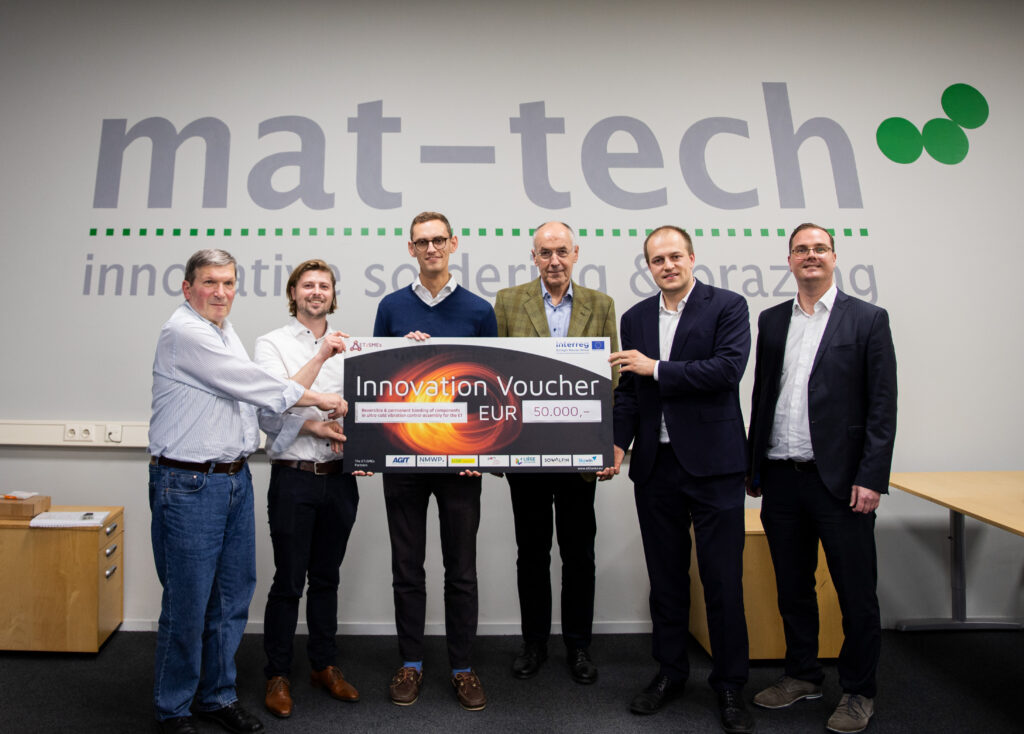
Hugo Schlich, Matthias Grosch and Peter Gier.
Both companies will jointly develop technology for reversibly bonding silicon to silicon and irreversibly bonding silicon to extruded aluminum and/or a copper alloy. These compounds are relevant to the composition of the Einstein Telescope’s mirrors and must be suitable for the extreme environmental conditions there, such as cryogenic temperature and ultra-high vacuum. MaTeck will use its expertise to manufacture, polish and measure the parts to be joined. Mat-Tech will provide the joining technology and perform the analysis of the joining.
About the Einstein Telescope
The Einstein Telescope is a unique project with enormous impact that will put Europe on the map worldwide. The Meuse-Rhine Euroregion is one of the regions that will be considered for the location of this large-scale underground research facility. The other possible location is Sardinia. The technology is already being developed there and there are sustainable opportunities for companies here. Mat-tech and MaTeck have seized this opportunity and will use the awarded funding for the development of their joint innovation.
Sensitive technology
The underground Einstein Telescope is used to research gravity waves. These are ripples in the universe caused by extreme events, such as the collision of two black holes. To detect the waves, lasers are fired through vacuum tubes at mirrors in the observatory’s kilometre-long tunnels. This is highly sensitive technology, where the quality of the bonding between the ultra-cold components has a major impact on the thermal noise of the components. Any small deviation might lower the accuracy of the measurements. The quality of the bondings must therefore be extremely high and the possible reversibility of these bonds adds the possibility of maintenance with reduced effort.
For further information on how to get an innovation voucher for your consortium feel free to contact your regional Business Developer Supporter.
22.09.2022
Trucks conduct geological survey for Einstein Telescope
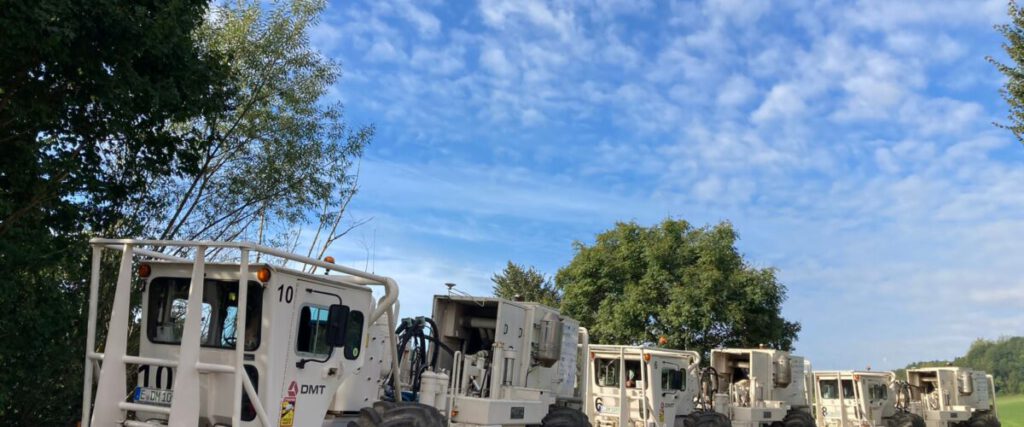
This September, three trucks are driving slowly through the Heuvelland and Voerstreek regions. These trucks are used to carry out geological research for the Einstein Telescope.
The Einstein Telescope requires a quiet environment to be able to take good measurements and will be realised at a depth of 200 to 300 metres. Previous studies have shown that the subsurface of the Euregio Meuse-Rhine seems quiet enough for the Einstein Telescope. But a better understanding of other factors and a larger area is needed. That is why three trucks are driving through the region to conduct precise subsurface measurements. Every 10 metres, these trucks lower a vibrating plate. Sensors along the route measure the effects of this to accurately map the structure of the subsurface.
The trucks drive between ‘s Gravenvoeren and Euverem, from Margraten to Henri-Chapelle and between Neufchâteau and Sippenaeken. To avoid nuisance in sensitive areas, such as villages or near badger setts, the measurements in these areas are restricted or no measurements are carried out here at all.
16.09.2022
Save the Date! The Einstein Telescope Industrial Advisory Board meets again on the 10.11.2022 in Liége

We are happy to invite you to the next Industry Advisory Board of the Einstein Telescope community. The meeting is open to all who are interested in the ET in the Euregio Meuse-Rhine. If you The meeting will take place at the University of Liége in the RISE buidling (). For further details and registration to the event please click here.
05.08.2022
Innovation voucher for Dutch-Belgian cooperation for Einstein Telescope
Dutch Innovation Handling and Belgian Calculus are going to cooperate within the Interreg EMR project ET2SMEs (Einstein Telescope to Small and medium-sized enterprises).
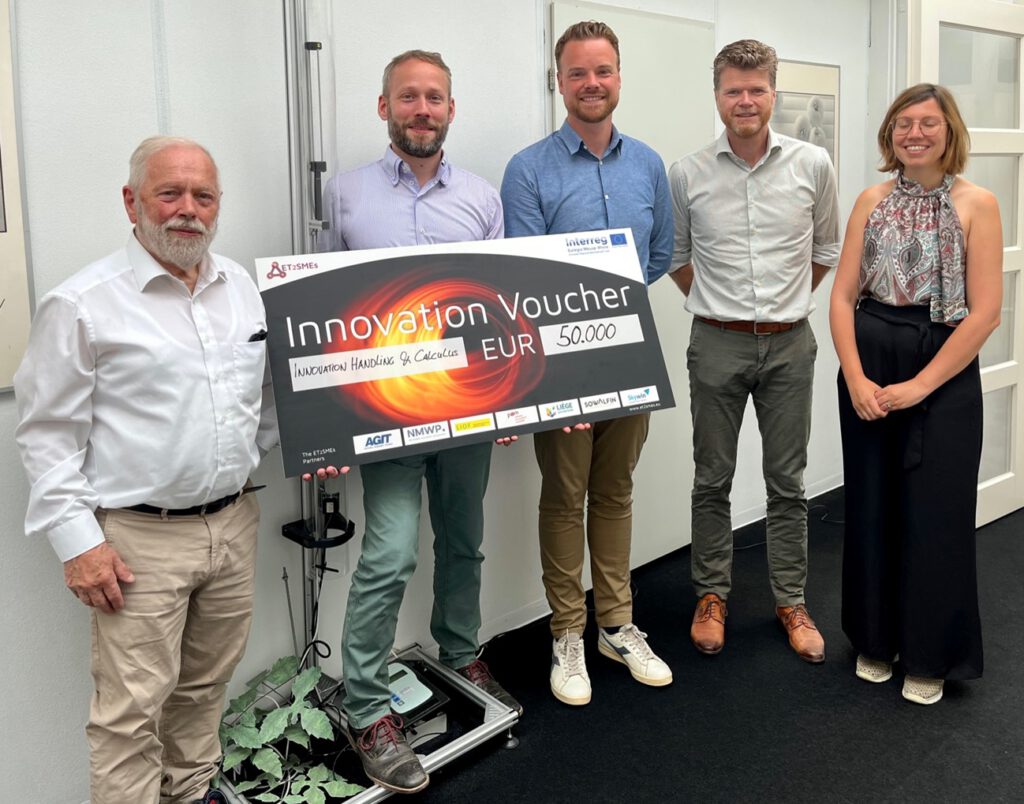
Together, the parties are developing a system with which the temperature in the underground tubes of the Einstein Telescope can be measured and monitored very accurately. The temperature measurement itself takes place via a measuring system based on sound waves that was developed by Innovation Handling. Calculus is developing a cloud platform to provide insight into and monitor the temperature measurements. It concerns groundbreaking new technology. They recently received an innovation voucher worth € 50,000.
About the Einstein Telescope
The Einstein Telescope is a unique project with enormous impact that will put Europe on the map worldwide. The Meuse-Rhine Euroregion is one of the regions that will be considered for the location of this large-scale underground research facility. The other possible location is Sardinia. The technology is already being developed there and there are sustainable opportunities for companies here. Calculus and Innovation Handling have seized this opportunity and will use the awarded funding for the development of their joint innovation.
Sensitive technology
The underground Einstein Telescope is used to research gravity waves. These are ripples in the universe caused by extreme events, such as the collision of two black holes. To detect the waves, lasers are fired through vacuum tubes at mirrors in the observatory’s kilometre-long tunnels. This is highly sensitive technology, where environmental factors such as temperature are crucial. Any small deviation can have a major impact on the accuracy of the measurements. The temperature in the tubes must therefore be constantly monitored.
Wilhelm van Schaik, CEO of Innovation Handling: “With the acoustic sensors, supported by the cloud platform, we think we can make a good contribution to realising controlled climate and process conditions within the facilities of the Einstein Telescope. The permanent monitoring enables rapid intervention in the event of disruption. In addition, it is possible to use this unique measurement concept in other applications as well.”
Rob Van Dun, CEO of Calculus: “We are particularly pleased to start a new partnership with Innovation Handling. In this way, new market segments also appeared on our radar. Moreover, we can seamlessly integrate the new technology we are developing for the Einstein Telescope into our innovative Internet of Things building management system.”
For further information on how to get an innovation voucher for your consortium feel free to contact your regional Business Developer Supporter.
19.07.2022
Einstein telescope in the NRW coalition agreement
The North Rhine-Westphalian state government will commit itself to the Einstein Telescope in the border region with Germany, Belgium and the Netherlands. To this end, it will also lobby for financial support from the federal government in Germany. The political parties CDU and Grüne have included this commitment in the coalition agreement they presented in June.
This step formalises the support of the NRW government and strengthens the case for the Einstein Telescope in the border region, the Euregio Meuse-Rhine. It builds on the unanimous support announced by the NRW state parliament in November 2020.
Germany has already invested in the Einstein Telescope at state and federal level. The Ministry of Economic Affairs, Climate Protection and Energy of North Rhine-Westphalia is co-financing the Einstein Telescope-related projects E-TEST and ET2SMEs. And the Federal Ministry of Education and Research (BMBF) is funding work on the technological aspects of the next generation of gravitational wave detectors.
Further links (german language):
18.07.2022
Where Einstein Telescope meets optical fibre research
Between October 2021 and March 2022, a 250-metre-deep hole with a diameter of 10 cm was drilled near Cottessen. Its main purpose? To investigate the structure of the subsurface, and whether it would be quiet enough for the Einstein Telescope. To this end, a vibration sensor was placed at a depth of 250 metres. But when Nikhef-researcher Frank Linde met Rob Jansen of TNO, they came up with something else: this narrow well also offered the chance to test whether they could use a fibre optic cable as a sensor over its entire length. This sensor could measure temperature, deformation and vibrations. And this technology, in turn, can be useful for all kinds of applications.
Fibre optic cables are mainly used for telecom purposes. Rob Jansen however, is one of the people investigating other applications. Together with other research institutes and companies of the European project SLAM-DAST, he studies how they can use the cable itself as a sensor. Preferably a sensor that measures vibrations as well as temperature and deformation over its entire length. At this location, Jansens’s team focuses on vibrations.
“The sensor that was placed earlier, measures vibration at a depth of 250 metres. But we wanted to hang a fibre optic cable in the pipe, and see if we could measure vibrations every 3 metres.” Jansen explains. “This gives you much more insight into the various soil layers. Because every type of soil has a different effect on the transmission and reflection of vibrations. This technique is already being used in the oil and gas industry to make pictures of the subsurface. The application in Cottessen is unique. No oil or gas is produced here and it is a very quiet and peaceful location. We therefore hoped to achieve very low signal-to-noise levels here.”
Installing the cable
The installation of the fibre optic cable was not an easy task. First, two 198-metre cables that were connected at the bottom were hung in the tube. After this, the well was filled up with cement. This prevents water from reaching the sensors, which could interfere with the measurements. “The big unknown was how good the coupling of the fibre to the cement would be,” says Jansen. They didn’t know that beforehand.
First measurements
Fortunately, the coupling was good and the researchers could take the first measurements in March. The well turned out to be a good test location. As expected, there was much less noise in the well than in the lab and you could clearly see the effect of depth. The deeper the cable, the lower the signal-to noise level. They were also able to determine the deformation of the cable in the well. For instance, after cementing, about 60% less light passed through the cable and it was also deformed at a certain point. But the cause of this – a weak spot in the cement and in the pipe – was known and there is enough optic signal left to work with.
“These first tests,” says Jansen, “have given us a good insight into the current status of the well and can be considered as baseline measurements. When we take new measurements, we will be able to monitor any further deformation. As a result of subsidence for example, or further hardening of the cement.”
The researchers are also waiting for the results of the vibration sensor at the bottom of the narrow well. “We would like to compare the vibrations of the fibre optic cable to the vibrations of that sensor. It serves as a reference point. If you make this comparison, you can model pretty well which amplitudes and frequencies you can measure with the fibre optic cable.”
Possible applications of fibre optic sensing technology
The goal of the SLAM-DAST project is to apply multiple sensor technologies in the same fibre optic cable, to optimise this and to industrialise it so that it can be applied widely. It is expected to be used in, for example, ‘Structural Health Monitoring’: the monitoring of materials and technical constructions such as bridges, viaducts and pipelines. It can also be used for applications in the soil, such as measuring subsidence or detecting earthquakes.
From gravitational waves to fibre optic sensing
It was not the main objective when, under the banner of the E-TEST project, it was decided to drill a hole near Cottessen for preparatory research for the Einstein Telescope. But the new insights it could provide for fibre optic sensing are a nice by-product. Rob Jansen is pleased that this opportunity has arisen. “It is a unique test location where TNO can demonstrate and characterise the latest technological developments in the field of fibre optics. Together with the enthusiastic and expert team of Nikhef.” Frank Linde is also enthusiastic about the collaboration, which can also provide new insights for the Einstein Telescope: “I always like high-tech. Hopefully with this fibre we can determine the reduction of seismic noise as a function of depth. And that will contribute to a well-founded decision about at what depth the Einstein Telescope could be located.”
12.07.2022
Dutch Growth fund investment in Einstein Telescope now definite
The intended investment of 42 million euros from the Dutch National Growth Fund for the Einstein Telescope is now definite . This was announced today. In April, the Dutch government granted this amount conditionally, but the project still had to develop a detailed valorisation strategy and National Monitoring Evaluation. In the meantime, the project has met these conditions and the allocation has become definite.
The investment of 42 million euros will go towards preparatory work, such as innovation of the required technology, location research, building a high-tech ecosystem and organisation.
In addition to this, the government is also reserving 870 million euros from the National Growthfund for the Einstein Telescope. This reservation provides the Netherlands with an excellent basis for applying in the future, together with Belgium and Germany, to realise the Einstein Telescope in the border region of South Limburg.
About the Einstein Telescope
The Einstein Telescope is a future underground observatory for measuring gravitational waves. Powerful laser beams will soon bounce between deep-cooled, vibration-free mirrors at the ends of kilometre-long vacuum tunnels. The instrument will be much more sensitive than existing detectors. As a result, it can detect many more sources and scan a volume of the universe thousand times larger. Researchers will use this instrument to look for instance for the precise structure of neutron stars, the birth process of black holes and the structure of the universe immediately after the Big Bang.
The border region of South Limburg – the Euregio Meuse-Rhine – is one of the possible locations for this observatory. Housing the Einstein Telescope in this region could have a major positive impact on science, the economy and society in the Netherlands. With the committed investments from the National Growth Fund, the Netherlands has the basis to join forces with Belgium and Germany to establish a strong candidacy in 2024/2025.
05.07.2022
Gravitational waves, the Einstein Telescope scientific collaboration formally established
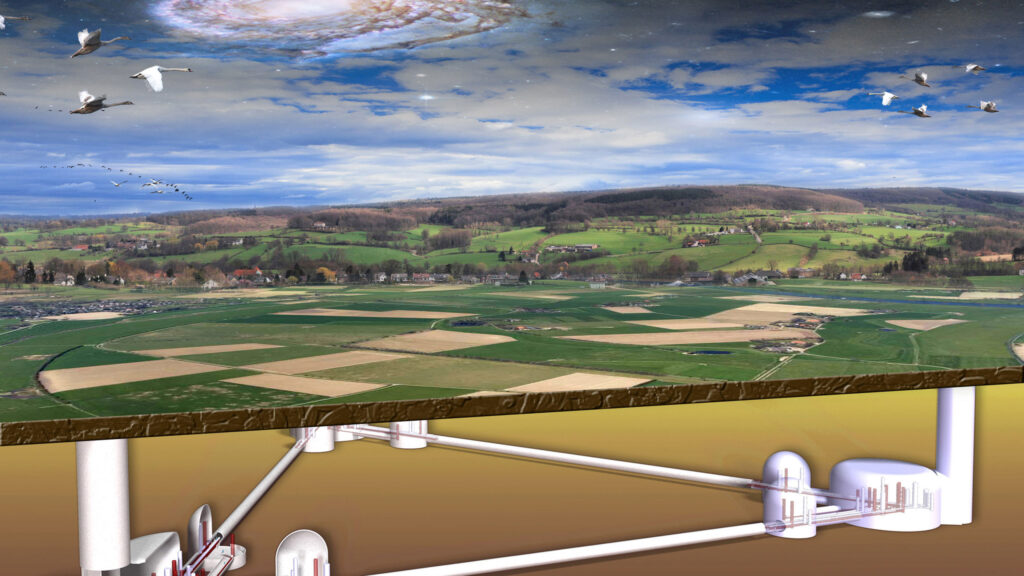
The Einstein Telescope (ET) scientific collaboration was formally established during the XII ET Symposium which took place at the Hungarian Academy of Sciences, Budapest, in June. The Symposium brought together the scientific community working on the ET Einstein Telescope project to build Europe’s future pioneering gravitational wave observatory.
Named after the great German theoretical physicist who was the first to predict the existence of gravitational waves, ET will be the most sensitive gravitational wave observatory ever built. The large research infrastructure will be used by scientists to “pick up” signals emitted just after the Big Bang and to study the nature of black holes. This makes Einstein Telescope a hugely important instrument for international physics and astronomy.
The Einstein Telescope Project is led by Jo van den Brand of Nikhef, the Dutch National Institute for Subatomic Physics, and by Fernando Ferroni, Gran Sasso Science Institute (GSSI) and Italian National Institute for Nuclear Physics (INFN).
“We were a scientific community, today we are a scientific collaboration, that is, a structured and organized system that works following shared rules to achieve a common goal: the construction of Einstein Telescope, a large European research infrastructure that will bring us to the centre of world science, allowing us to maintain scientific and technological leadership in this promising field of fundamental physics research. This is therefore a moment of great satisfaction and motivation for all of us,” commented Michele Punturo, an INFN researcher who has been leading the ET community until now and will now serve as the collaboration’s spokesperson.
“In the Collaboration we already have an Observational Science Board with more than four hundred people who are working on different scientific topics, from fundamental physics to nuclear physics, from astrophysics to astroparticle physics, to cosmology. ET will be truly revolutionary for our understanding of the universe throughout its cosmic history,” explained Marica Branchesi, professor at the Gran Sasso Science Institute (GSSI) and researcher at INFN, coordinator of the Einstein Telescope Observational Science Board (OSB).
The sophisticated research infrastructure will operate in the field of gravitational and “multi-messenger” astronomy: a branch of astrophysical research established after the first gravitational wave observation in 2015 announced by the LIGO (Laser Interferometer Gravitational-Wave Observatory) and Virgo collaborations. “These are exiting times: the detections of gravitational waves by LIGO and Virgo started a scientific revolution, ushering in the era of gravitational and multi-messenger astronomy, which has a bright future,” commented the director of the European Gravitational Observatory (EGO), Stavros Katsanevas.
“The LIGO-Virgo-KAGRA network is currently improving its sensitivity towards a multiplication of detected gravitational wave events by an order of magnitude and more, and it is encouraging that this effort can continue with the third-generation Einstein Telescope detector. ET will probe the universe of gravitational waves to the dawn of star and galaxy formation and beyond,” concluded the EGO Director.
The Symposium brought together 438 scientists from 13 countries, both in person and remotely, who discussed the upcoming challenges and the scientific progress made in recent months by each ET working group. During the event, Jo van den Brand and Fernando Ferroni presented the perspective of the scientific institutions that are supporting ET. Finally, the ET Collaboration Council was established, chaired by Harald Lueck of Max Planck Institute, Germany, and composed of representatives from each of the 79 research groups participating in the collaboration.
21.06.2022
Third innovation voucher awarded to NRW-Wallonie consortium – Preparation of a Digital Twin for the Einstein Telescope
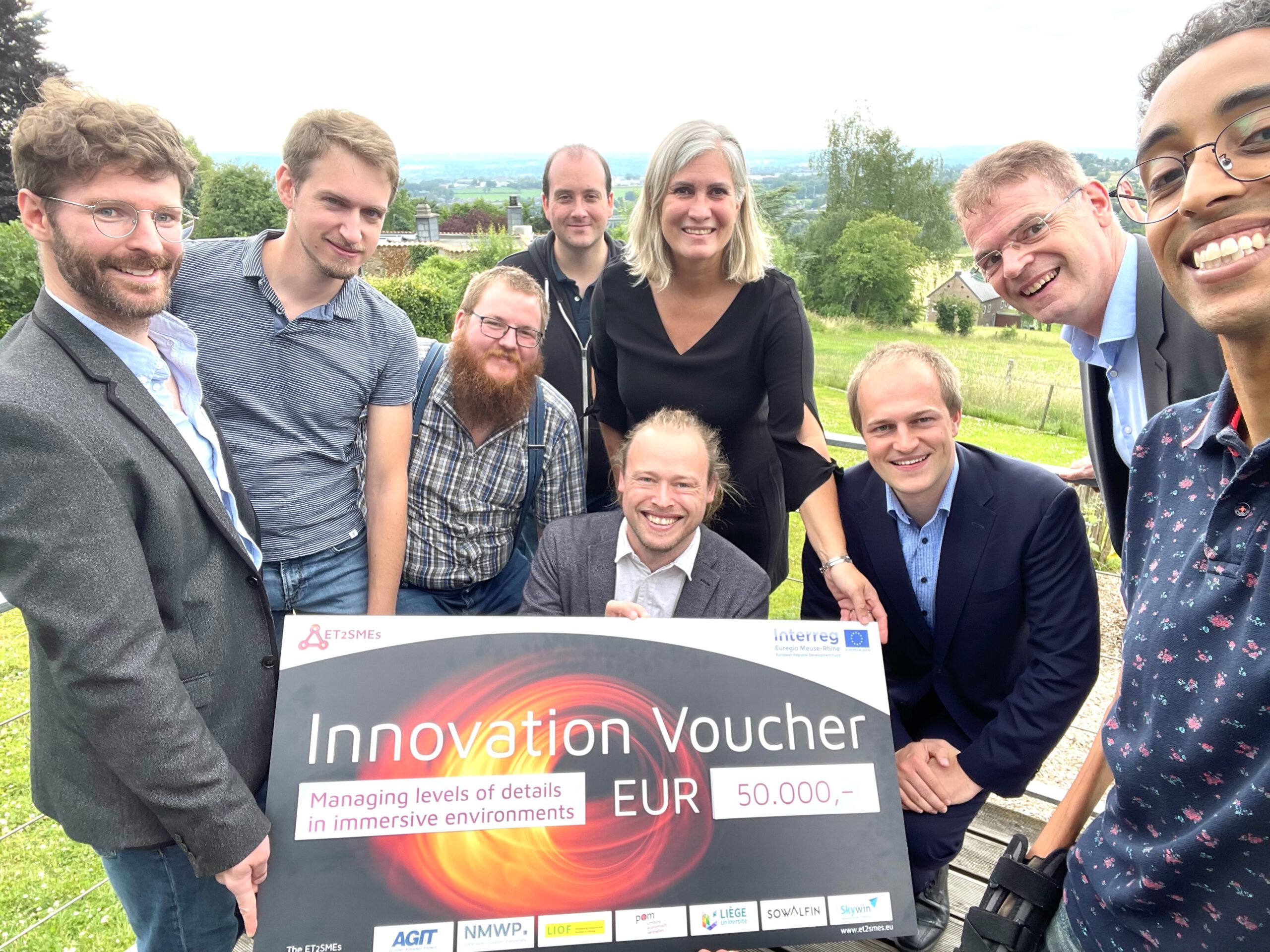
Preparations for the planned large-scale research facility Einstein Telescope (ET) are in full swing and the regional economy is also successfully involved in the preparation and technological development. Another innovation project idea within the framework of the EMR project ET2SMEs is being funded with a voucher for €50,000. A consortium of the North Rhine-Westphalian startup Terranigma solutions GmbH and the Walloon company Nirli SA are working together to develop a level-of-detail algorithm for the virtual representation of large facilities such as the Einstein telescope.
Huge, underground and extremely precise
The planned research facility is a project of superlatives: at a depth of up to 300 metres, a tunnel system is being built in the shape of a triangle with large caverns for the measuring instruments at the corners. The side length of about 10 km makes the facility extremely large. Gravitational waves are measured in this facility. This is done via the minimum curvature of space in an order of magnitude smaller than the diameter of an atomic nucleus! So extreme differences in size come together here.
In order to be able to maintain an overview both during conceptual design and later operation, a so-called digital twin is being developed for the telescope. The digital twin describes a fully digitised copy of the planned facility that is as exact as possible. To ensure that this image always delivers the appropriate level of detail for the different scales involved, it requires a so-called level-of-detail algorithm. It is precisely this algorithm that the SME consortium is working on together.
“Digital twins and building information management (BIM) are already being used today for large construction projects and linked with augmented and virtual reality. We believe there is still a lot of potential here,” says Jean-Marc Duyckaerts from Nirli SA. Simon Virgo from Terranigma Solutions GmbH also sees great opportunities in the project: “Both we and Nirli had already dealt with the problem of detail grading independently of each other. So, we have found exactly the right partner with whom we can now tackle this challenge together.”
The two companies got to know each other through the cross-border funding project ET2SMEs. With the support of the regional partner NMWP, an introductory project idea was developed by Terranigma Solutions, communicated via ET2SMEs and a successful matchmaking was initiated. “The developed technology has application potential far beyond the Einstein telescope. Here, work is being done on an important component for further digitisation,” says Matthias Grosch, project manager at NMWP, assessing the project.
20.05.2022
Dutch government embraces plans for Einstein Telescope in border region South-Limburg
The Dutch government intends to conditionally allocate 42 million euros from the Dutch National Growth Fund to the Einstein Telescope, and is also reserving 870 million euros for a future Dutch contribution to the construction. This decision was taken by the Dutch government based on the advice of the Advisory Committee of the National Growth Fund. With this decision, the Cabinet gives an enormous boost to Dutch science and to the broad development of the South Limburg border region.
The intended investment of 42 million euros will go towards preparatory work such as innovation of the necessary technology, location research, building up a high-tech ecosystem and organisation. With the reservation of the 870 million, the Netherlands has an excellent basis to apply in the future, together with Belgium and Germany, for the realisation of the Einstein Telescope in the border region of South Limburg.
The Cabinet however does ask for a further explanation of the valorisation strategy of the scientific project. The initiators are also asked to further elaborate the plan for monitoring and evaluation of the project. The partners involved will of course work to meet these conditions timely.
The proposal for granting money from the National Growth Fund to the Einstein Telescope was submitted on 31 October 2021 by the Minister of Education, Culture and Science (OCW), with the support of the colleague from Economic Affairs and Climate Policy (EZK).
National Institute for Subatomic Physics Nikhef, the Province of Limburg and regional development agency LIOF jointly drew up the growth fund proposal last year, supported by the Ministries of OCW and EZK. Nikhef director Stan Bentvelsen has been involved with the Einstein Telescope for years. He is delighted, but also sees that there is still a lot of work to be done: “It is fantastic that the cabinet embraces the ambition to make the Netherlands a world leader in research into gravity waves. These Growth Fund resources form the basis for further cooperation with our partners in Germany and Belgium and for research into the geological subsurface in the border region of South Limburg. A major project requires a careful process, and we are putting our heart and soul into it. I am confident that we will meet the additional conditions.”
Stephan Satijn, Provincial Executive member for Limburg, is very enthusiastic about the opportunities that the possible arrival of the Einstein Telescope offers for the Netherlands and Limburg.
“With today’s decision, the Cabinet places our country at the global forefront of high-tech and science. Limburg is the logical place to help shape this leading position. Not only because of the suitability of our soil for the Einstein Telescope, but also because we are accustomed like no other to working together internationally and to connecting science and business. I am pleased and proud that the government recognises the value of Limburg and is helping to increase it further with such a substantial investment. In addition to direct orders for companies, the Einstein Telescope gives Limburg and the Netherlands a unique lead in knowledge, expertise and innovative technologies that can be marketed by existing or new companies. This is essential for the economic development of the Netherlands in the medium and especially the long term.”
About the Einstein Telescope
The Einstein Telescope is a future underground observatory for measuring gravitational waves. Powerful laser beams will soon bounce between deep-cooled, vibration-free mirrors at the ends of kilometre-long vacuum tunnels. The instrument will be much more sensitive than existing detectors. As a result, it can detect many more sources and scan a volume of the universe thousand times larger. Researchers will use this instrument to look for instance for the precise structure of neutron stars, the birth process of black holes and the structure of the universe immediately after the Big Bang.
The border region of South Limburg – the Euregio Meuse-Rhine – is one of the possible locations for this observatory. Housing the Einstein Telescope in this region could have a major positive impact on science, the economy and society in the Netherlands. With the committed investments from the National Growth Fund, the Netherlands has the basis to join forces with Belgium and Germany to establish a strong candidacy in 2024/2025.
This is a joint press release of National Institute for Subatomic Physics Nikhef, Province of Limburg and regional development agency for Limburg LIOF.
03.05.2022
The next Call for vouchers started!
Become part of the ET2SMEs project by applying for your own ET-related cross border innovation project.
Face to Face Technology Workshops:
6 Technology workshops dedicated to companies are planned in ET2SMEs. In these workshops, the technologies required for the construction and operation of an Einstein telescope will be presented in detail. The aim is to sensitize SMEs, start-ups and large enterprises at an early stage to develop innovations in the addressed technologies in cross-border projects, involve them in the process of establishing the Einstein Telescope, and to network.
On this page, you will find information about all workshops planned as well as the possibility to register.
Please keep in mind, that you have to register separately to each workshop and that we only can give access to a limited number of participants (due to the sanitary situation).
Your registration is subject to sufficient available places.
Tuesday, 26 April 2022, Limburg BE
Thursday, 12 May 2022, Interface Entreprises-ULiège, BE
Thursday, 19 May 2022, Aachen DE
Tuesday, 31 May 2022, Aachen DE
Wednesday, 1 June 2022, Limburg BE
Tuesday, 21 June 2022, Limburg NL
03.04.2022
Second innovation voucher for SMEs awarded
After the premiere in March the regional economy developer AGIT handed over the next ET2SMEs innovation voucher on 13th of April. With almost 50.000 € a Belgian German consortium, lead be Forschungs- und Entwicklungsgesellschaft Fügetechnik – FEF from Aachen, Germany with the Partner Werkhuizen Hengelhoef from Genk in Flandern, Belgium. By the subsidy initiative ET2SMEs the Euregioe Maas-Rhine with its partners and the European Union supports the development of innovative Applications for the small and medium sized businesses in technology fields accross the Einstein Telescope, for which the BE-DE-NL region is applying.
Worlds largest ultrahigh vacuum tubesystem planned
FEF and Werkhuizen Hengelhoef are planning the development of a new production concept für ultrahigh vacuum (UHV) tubes, specially designed for the technical and financial needs and possibilities of the planned ET, which is going to be constructed in up to 300 meteres depth.
“The laser beams necessary for the Einstein Telescope meausrements are send through a 120 km long UHV system with a diameter of approx. 1 meter. The largest ever worldwide created UHV system”, explains Dr. Marion Purrio at the official handing over of the innovation voucher. “We as consortium will develop a fully mechanized production concept für UHV tubes, where the final production will take place in the underground ET caverns, the process is a quasi continuum production of tubes with 500 to 1000 meter length, minimised transportation costs and a risk minimization for leakage.”
Besides the two small and medium sized enterprises (SME) additionally the RWTH Aachen University (Physical Instititute B) and the large enterprise Aperam Stainless Europ from Genk will participate in this ambitious project. FEF and Werkhuizen Hengelhoef did not know each other till the cross border matchmaking promoted forom the two business developers Katrine de Peap from POM Limburg and Ralf Meyer from AGIT. “Now we complement each other excellent with each ones individual Know-How and the two additional partners for the development of the new production concept”, says Jef Hoste, Development Manager at Werkhuizen Hengelhoef. “The new German-Flemish four partner consortium is doing great pioneering work for the application oriented development of necessary ET-Technologie”, is the point of view from the responsible department leader Meyer about the project. “New economic perspectives are also opening up to the companies for the coming years, as new cooperation and market potential is generated beyond the border, which is still sadly lacking for many companies in the Euregio.”
Next Call for Projects till 2nd of May
ET2SMEs supports further high-quality R&D projects around ET-relevant technologies with up to 50,000 euros, which are launched cross-border by at least two small and medium-sized enterprises (SMEs). Interested companies also receive direct support in expanding their business network into neighbouring countries, especially in finding a suitable SME partner. In particular, projects in industrial research and experimental development in the ET operating technologies cryogenics, vacuum, precision mechanics/mechatronics, metrology, optics, coating of mirrors, lasers and advanced control algorithms are in demand, as well as relevant geological technologies (e.g. drilling technology, simulation, modelling, hydrology) due to the underground installation of the gravitational wave detector. Information and application documents for the current, third call for projects, which ends on 02 May 2022, at: https://et2smes.eu/vouchers/
09.03.2022
First innovation voucher for SMEs awarded
Aachen Region / Euregio. – Great joy for the two high-tech companies fionec GmbH, Aachen, and JPE B.V., Maastricht: both companies today received the first cross-border innovation voucher in the amount of 50,000 euros from AGIT, regional economic development agency! With the new funding initiative ET2SMEs, the participating partners from the Euregio as well as the European Union support the development of innovative applications of small and medium-sized enterprises in technology fields related to the new Einstein telescope, for the construction of which the three-country region is a promising applicant.
fionec and JPE are planning the joint development of a novel measuring device that will enable very flexible measurement of roughness on precision components: “Roughness is one of the most frequently measured parameters in production technology. The need for testing is particularly high for precision and ultra-precision components, such as those that will be used in the Einstein telescope,” explains fionec Managing Director Dr Frank Depiereux, “With regard to the combination of optical roughness measurement and extremely flexible positioning, there is no comparable solution on the market to date. We will now realise this together.”
“fionec and JPE did not know each other until the cross-border merger by business developers Ralf P. Meyer, AGIT, and Rim Stroeks, ZENIT. Now we complement each other perfectly with our individual know-how, not only in the development of a new prototype, but we are already thinking very concretely about further joint business activities,” adds Huub Janssen, Managing Director of JPE. “With their project, the two companies are a prime example of what we want to achieve with our ET2SMEs initiative,” AGIT Managing Director Sven Pennings makes clear, “We are doing pioneering work for the new Einstein telescope that is to be built here in the border region, we are already allowing our technology-oriented SMEs to benefit from this ambitious large-scale research facility, and we are opening up new cooperation and market potential across euregional borders that most companies still lack.”
ET2SMEs supports further high-quality R&D projects around ET-relevant technologies with up to 50,000 euros, which are launched cross-border by at least two small and medium-sized enterprises (SMEs). Interested companies also receive direct support in expanding their business network into neighbouring countries, especially in finding a suitable SME partner. In particular, projects in industrial research and experimental development in the ET operating technologies cryogenics, vacuum, precision mechanics/mechatronics, metrology, optics, coating of mirrors, lasers and advanced control algorithms are in demand, as well as relevant geological technologies (e.g. drilling technology, simulation, modelling, hydrology) due to the underground installation of the gravitational wave detector. Information and application documents for the current, third call for projects, which ends on 04 April 2022, at: https://et2smes.eu/vouchers/
29.04.2022
ET Industrial Advisory Board Meeting – organized face-to-face on April 29 2022 at the University of Maastricht
On 29.04.2022, the next joint ET Industrial Board Meeting of the projects E-TEST, ET2SMEs & ETpathfinder is planned as face-to-face meeting at the University of Maastricht, the Netherlands.
Free parking places at the ETpathfinder location at UMaastricht
AGENDA
From 10:00 am: Registration & Welcome coffee
10:30 am – 12:00 am – Plenary session – Common hall at the ETpathfinder entrance (maximum capacity: 85 participants)
Welcome
- Why – Who – How – When by Prof. Stefan Hild, UMaastricht NL
ET preparatory project presentations: R&D latest achievements & forecast:
- Einstein Telescope (ET) project , ESFRI Call time-line , ET Investment by Nikhef NL
- ETpathfinder, R&D Laboratory – 06.2019 – 12.2022 by Prof. Stefan Hild, UMaastricht NL
- E-TEST : Einstein Telescope Site and Technology– 02.2020 –12.2023 by Annick Pierrard, Interface Entreprises ULiège BE
- development of the prototype of suspended mirror in cryogenic conditions (25K) by Prof. Christophe Collette, PML ULiège BE
- underground study of the EMR by Prof. Frédéric Nguyen, UEE ULiège BE
- Ongoing and future ETpathfinder and E-TEST Calls for tender
- ET2SMEs – 03.2021 – 12.2023 “Maximizing the economic and social impact of the possible implementation of the Einstein Telescope in Euregio Meuse-Rhine” by Ralf Meyer, AGIT DE
- ET Economic Impact – Return on Investment
- How to get Business out of Big Science projects like ET, CERN…
- Q/A session
12:00 pm – 15:30 pm:
In parallel: Walking Lunch – Networking – possibility to visit the ETpathfinder facility
13:00 pm: Separation into 4 sub-working groups per technology theme in different meeting rooms
- Cryogenics – Vacuum – Precision mechanics & mechatronics – Sensors – Advanced control algorithms
- Optics & optical metrology – Mirrors coating – Lasers
- Geology/Civil Engineering: Geophysical imaging & remote sensing – Water technology – Tunneling technology – Simulation & modeling
- Sustainability
Possibility for companies to pitch about their expertise and their proposals of cross-border collaborative innovation projects. Possibility for ET researchers to present their ideas and needs.
Open End the ET IAB (around 15:30 pm)
cht. Further information will be given as soon as possible.
Register today!31.03.2022
Grenzlandkonferenz 2022
On 31.03.2022, the 4th German-Dutch Borderlands Conference will take place in the Aachen Coronation Hall. During the conference, new goals of cross-border cooperation will be presented and a balance sheet of the past years will be drawn up. Thematically, the Borderlands Conference will be based on the contents of the North Rhine-Westphalia-Dutch Borderlands Agenda. Due to the geographical location of Aachen and the Euregio Meuse-Rhine, the conference will also include elements of trinational cooperation.
For this reason, a side event on the Einstein telescope will take place in the context of the Borderlands Conference, with the aim of involving representatives of German politics just as closely in the preparatory activities and to consider the establishment of a German task force in the future.
We will announce in due time whether the Borderlands Conference 2022 will take place in presence, hybrid or online.
On the conference, an award for special commitment to cross-border cooperation will be presented again this year. You can find the call here. Call for the Border Region Award 2022
18.03.2022
Conférence Wallonne télescope Einstein
18/03/2022 – Liège Science Park, Liège
Le Télescope Einstein est un projet européen de grande infrastructure scientifique, qui a pour objectif de créer le plus grand observatoire mondial en matière de détection d’ondes gravitationnelles (d’infimes soubresauts de l’espace-temps) afin de mieux comprendre la théorie du big bang et les origines de l’Univers.
L’infrastructure consistera en trois paires d’interféromètres géants, longs chacun de 10km, disposés en triangle, et enfouis entre 200 et 300 mètres de profondeur.
Plusieurs sites d’implantation en Europe sont envisagés, parmi lesquels la région des Trois Frontières, au cœur de l’Euregio Meuse-Rhin, à cheval sur les frontières belge, hollandaise et allemande. La décision sur la localisation serait prise en 2025.
En attendant, l’Euregio Meuse-Rhin se prépare, à travers plusieurs projets financés et en cours (E-TEST, ETpathfinder, ET2SMEs), permettant d’étudier par exemple les sous-sols de manière approfondie, de développer un grand miroir suspendu à température cryogénique (un projet unique au monde qui sera développé au CSL à Liège) et des technologies pour améliorer l’observation des ondes gravitationnelles.
Prédites par Albert Einstein et observées pour la première fois en 2015, les ondes gravitationnelles marquent les débuts de la révolution de l’astronomie gravitationnelle, et d’une nouvelle physique pour aller plus loin dans la compréhension des origines et de l’évolution de notre Univers.
Le Télescope Einstein est un énorme projet scientifique qui pourrait prendre place partiellement en Wallonie. Il offre des opportunités importantes et très stimulantes pour les chercheurs mais aussi les entreprises technologiques des régions concernées, tout en constituant un indéniable facteur d’attraction, à l’image du CERN.
La Conférence wallonne Einstein Telescope, organisée ce 18 mars par l’ULiège et l’Euregio Meuse-Rhin, était l’occasion d’informer tous les acteurs wallons sur les multiples facettes du projet et de faire un état des lieux du dossier.
Les Ministres-Présidents Pierre-Yves Jeholet et Oliver Paasch, le Secrétaire d’État Thomas Dermine ainsi que les Ministres, Vice-présidents du Gouvernement wallon Willy Borsus et Philippe Henry, le Gouverneur de la Province de Liège, Hervé Jamar, le Président de l’Euregio-Meuse-Rhin, Luc Gillard, et son Directeur, Michael Dejozé, et les représentants des communes d’Aubel, Plombières et Dalhem concernées par le projet ont pris part à la Conférence Wallonne du Télescope Einstein. Les Cabinets des Minsitres Di-Rupo, Glatigny et Morreale étaient représentés par leurs conseillers.
14.12.2021
(Eu)Regional SMEs benefit from Einstein Telescope: Implement your own ideas with up to 50,000 euro vouchers!
Euregio Meuse-Rhine, December 2021 – Our cross-border region is applying for the Einstein Telescope (ET), a third generation gravitational wave detector and cutting-edge research infrastructure of global importance. As of now, small and medium-sized enterprises (SMEs), start-ups and engineering companies with special expertise in the operational and geological technologies of the planned large-scale research facility can receive funding of up to 50,000 euros to realize their project idea. This involves application and experimental development projects that are innovative and carried out with a company on the other side of the border in the extended Euregio Meuse-Rhine.
Applications for innovation vouchers can be submitted until January 24th, 2022 as part of the first call for projects. For more information on the conditions of the competition, please visit: https://et2smes.eu/vouchers/. Far more than 100 businesses, especially SMEs, joined the virtual information event on December 9th and informed them-selves about their inspiring opportunities.
The new offer is provided by the euregional initiative ET2MEs under the leadership of AGIT, regional development agency of Aachen region and supported by the INTER-REG programme of the European Union and the Euregio Meuse-Rhine.
“We not only provide innovation vouchers worth 25,000 to 50,000 euros, but also directly connect the companies with complementary partners on the other side of the national borders,” explains Ralf P. Meyer, leadpartner of the ET2SMEs project at AGIT. “In all phases, from planning and construction to regular operation of the facility, companies from the border region will be able to apply directly for tenders and thus for numerous con¬tracts involving the Einstein Telescope,” Meyer emphasizes.
Companies will also soon have the opportunity to present themselves and their know-how in a virtual 3D model of the ET. Furthermore, there will be the opportunity to participate in an ET Industrial Advisory Board (IAB) of business and research for the large-scale facility as a dialogue partner and advisor in the coming years.
The aim of ET2SMEs is to bring the Einstein Telescope, for which the extended Euregio Meuse-Rhine is competing with excellent chances, closer to SMEs in the region and to let them participate directly in terms of technology development and economic exploitation. Technologies include optics, mirror coating, laser cryogenics, vacuum, precision mechanics / mechatronics, sensors / controls, but also drilling technology, modelling, simulation, artificial intelligence or hydrology. The most important concern is to stimulate the cross-border innovation-oriented cooperation of technology-oriented companies and to produce targeted innovations that are significant not only for the ET, but also for other demanding applications and future markets.
The Einstein Telescope is a unique research project with global impact that will put Europe at the forefront of a new research discipline worldwide: The gravitational wave observatory of the latest, third generation will produce fundamentally new insights into the formation of the universe and the evolution of galaxies, stars and black holes. The investment for this large-scale research facility alone amounts to 1.9 billion euros, 500 direct and 1,150 indirect jobs will be created and another two billion euros are estimated for its operation until 2080.
Along with Sardinia (IT), the Three-Country Corner is the last suitable region in Eu-rope to apply for the location of this facility. A final decision on the location is expected in early 2025. Commissioning of the facility is planned from 2032.
Join our technology workshops!
- Precision Mechanics, Sensors, Advanced control algorithms (Limburg (BE))
- Optics, Mirror coatings, Lasers (Aachen (DE))
- Geophysical imaging, Simulation & Modelling (Aachen (DE))
- Vacuum, Cryogenics (Thursday May 12 2022, Interface Entreprises – ULiège (BE))
- Tunneling, Water technology (Limburg (BE))
- General workshop: other technologies (Limburg (NL))
Friday, October 8th, 2021
ET Industrial Advisory Board face-to-face Meeting – Friday October 8 from 9:30 am till 2:00 pm
The Einstein telescope and preparation projects as E-TEST, ETpathfinder and ET2SMEs are pushing the technology beyond the current state of the art in many areas, both for the prototype of interferometer and for geological investigation of the subsurface.
As part of E-TEST, we have established an ET Industrial Advisory Board ( ET IAB) to facilitate close collaboration with various industrial partners, both SMEs and large companies active in the fields of activities required by the ET, from Belgium, the Netherlands and Germany.
The second joint ET Industrial Advisory Board will take place on October 8 2021 from 9:30 am till 2:00 pm, lunch included. We have the pleasure to announce that it will be organized face-to-face, at the Interface Entreprises ULiège, Avenue Pré Aily, 4, 4031 Angleur (Liège), Belgium.
The general/common part of the meeting will be recorded and published on the website. The specific Working Groups are only organized face-to-face and won’t be recorded.
Agenda
Registration, check of Sanitary Pass & Welcome coffee from 8:45 am
9:30 am – 11:00 am – Welcome and general session
Welcome – by Annick Pierrard, ULiège Interface Entreprises
- WHY: Purpose of the joint ET Industrial Advisory Board?
- WHO: To who is it dedicated?
- HOW: What are the conditions to participate?
- WHEN: Frequency of the meeting
Short project presentations & latest achievements:
- Einstein Telescope (ET) project, investment & ESFRI Call time-line
- Einstein Telescope social/economic impact, return on investment – by Provincie Limburg NL / Lysias
- E-TEST : Einstein Telescope Site and Technology – 01.02.2020 – 31.07.2023
- ETpathfinder, R&D Laboratory – 03.06.2019 – 02.06.2022
- ET2SMEs – 01.03.2021 – 31.08.2023 “Maximising the economic and social impact of the possible implementation of the Einstein Telescope in Euregio Meuse-Rhine”
- Q/A session
11:00 am – 11:15 am – Coffee break
11:15 am – 11:30 am – Separation into 6 sub-working groups in different meeting rooms
11:30 am – 13:00 pm – Interactive industrial/scientist Prototype and Geology Working Groups led by the ET Technology Sheets Responsibles, with the participation of one ET2SMEs business developer per WG, based on the technologies requested by the Einstein Telescope
- Cryogenics – Vacuum
- Precision mechanics and mechatronics – Sensors – Advanced control algorithms
- Mirrors coating – Lasers – Optics & optical metrology
- Geophysical imaging and remote sensing
- Water technology – Tunneling technology
- Simulation and modeling
Please find the mutual NDA to be completed and signed in duplicate (one for the company, the other for the University of Liege) by each company participating in the ET Technology Working Groups.
Please send it scanned to a.pierrard@uliege.be, and bring the original copy for the University of Liege signed on the day of the ET IAB.
13:00 pm – 14:00 pm – Lunch in the different meeting rooms
14:00 pm – End of the ET IAB
The registration to the ET IAB is free of charge but mandatory via this link. We are really looking forward to meeting all of you on October 8!
On 23/09/21 we have reached the maximal number of participants that we can welcome face-to-face at the Interface Entreprises ULiège.
From now on, only virtual participation to the general part of the ET IAB will be possible (from 9:30 am till 11:00 am).
Please note that the 6 technology Working Groups are only organised face-to-face and won’t be recorded.
Deadline for registration to participate virtually to the general part on the ET IAB (from 9:30 am till 11:00 am) is Thursday October 7 at 10:00 am. The ZOOM link will be sent to all registered persons.
Feel Safe.

Gates wide open – with proof. Welcome to the Interface Entreprises – ULiège with full vaccination protection, recovery or negative test result from an official testing centre. Your proof is complete in combination with your identity card or passport.
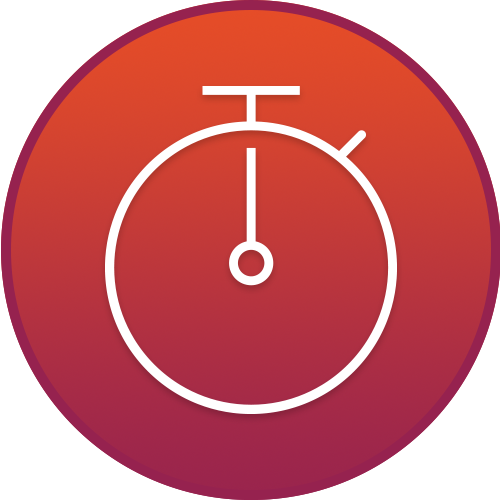
The right timing. A negative PCR or antigen test must be no more than 48 hours old, the second vaccination at least 14 days ago, the positive PCR test result at recovery between 28 days and 6 months old. Done? Let´s go.

It all depends on the right apps. For fast, smooth entry, it‘s up to you too. Enter your proof of full vaccination, recovery or negative test in the apps Corona-Warn or CovPass.

By far the best idea. Though we ask you to maintain a minimum distance of 1.5 metres from other ET Industrial Advisory Board participants, you will still see the latest innovation up close and personal.

For everyone‘s protection. Please wear a medical mask or FFP2 mask (no visors or fabric masks). And although you might not be able to see it, we are smiling at you behind our masks.

Networking without physical contact. Even though you might be delighted at seeing other people again or closing a successful Science-to-Business or Business-to-Business collaboration – please forego shaking hands and physical contact.

“Bless you.” For the sake of yourself and others, please sneeze or cough into the crook of your arm. Even better, do so while maintaining a great distance of least one metre or turning away from others.

Effective infection protection. Sanitiser dispensers located in our entrance and meeting rooms are ready for frequent use. And highly exposed surfaces are regularly cleaned and disinfected for you.

Let it taste good. With our catering partners in the different meeting rooms: with tailor-made concepts for compliance with all safety and hygiene regulations. Enjoy your meal!
Thursday, July 1st, 2021
Einstein Telescope approved for ESFRI Roadmap 2021
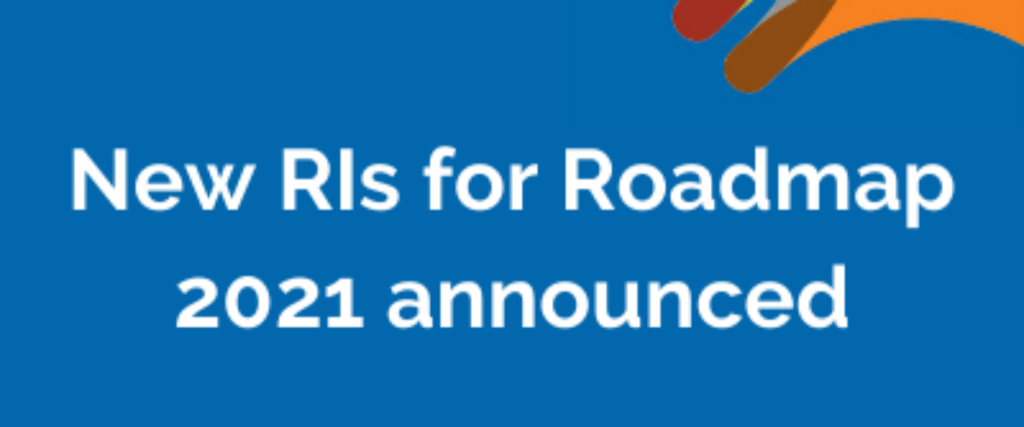
On June 30th, the European Strategy Forum on Research Infrastructures (ESFRI) decided to include the Einstein Telescope in the 2021 upgrade of its roadmap. This confirms the relevance of this major international project for a next generation gravitational waves observatory for the future of research infrastructures in Europe and gravitational wave research at global level.
The Research Infrastructure Consortium Coordinators, Antonio Zoccoli of INFN and Stan Bentvelsen of Nikhef, are extremely excited about this result. “We are very pleased about this important result: the ESFRI approval acknowledges the value of our project and strengthens the Einstein Telescope at the European level”, says Zoccoli. “We will work synergistically for its development, confident that it is strategic to foster our knowledge of the universe, technological innovation and social growth.”
“The ESFRI-status is a major step towards the realisation of this European project, – says Bentvelsen – “scientifically the Einstein Telescope is undisputed, and with the ESFRI-status there is indispensable recognized support for its quality and impact. We are looking ahead to further develop the plans together with all countries involved.”
The Italian government submitted the proposal for the ESFRI-roadmap on September 9th, 2020 supported by the Netherlands, Belgium, Poland and Spain. “The preparation of the proposal has been a two years large effort involving several research institutions and universities, now composing the Einstein Telescope consortium, belonging to ten European countries and having real interdisciplinary competences”, says Michele Punturo, Coordinator of the ET-ESFRI proposal preparation.
Since September 9th, several of the people involved were invited to present the plans, to deepen specific aspects of the project and answer questions of the ESFRI evaluation committee. Among them was Marica Branchesi, member of the ET-ESFRI proposal preparation team: “We have worked hard to develop the science case of the Einstein Telescope. Each simulation showed us the enormous capabilities of the Einstein Telescope observing the Universe. The Einstein Telescope will revolutionize our knowledge in fundamental physics, astrophysics, and cosmology”, says Branchesi.
The Einstein Telescope was identified after a long and accurate process of evaluation and selection. During the ESFRI Assembly meeting, delegates officially decided to include the Einstein Telescope in the roadmap. This official European approval now brings the project into a new phase. The scientific Institutions involved from ten countries (Belgium, Germany, Hungary, Italy, Norway, Spain, Switzerland, Poland, The Netherland, United Kingdom) will now have to intensify their research and development work on the Einstein Telescope and gravitational waves. It will also speed up the ongoing subsurface studies for the characterization and evaluation of the candidate sites that could host the underground infrastructure.
A new window on the universe
The Einstein Telescope is a future underground observatory for gravitational waves. The instrument will be much more sensitive than existing gravitational wave detectors. Therefore, the observatory will enable scientists to peek into the ‘dark ages’ of the universe for the first time. Gravitational waves were detected for the first time in 2015 and offer a new way of studying the universe. Until their first detection, scientists could only study the universe by looking at light or radiation, but with gravitational waves they can observe vibrations of spacetime itself.
Although the existence of gravitational waves was already predicted by Albert Einstein a hundred years ago, he did not expect it was possible to ever detect them. Yet with the mind blowing technological developments of the last century, scientists and engineers have managed to reach the sensitivity and precision that is needed to observe them. This opened a new era in the study of the universe, the era of gravitational wave and multimessenger astronomy, and led to a Nobel prize in 2017. The Einstein Telescope will lead to many more unimaginable discoveries in the future in this new field of research.
Thursday, May 27th, 13.00 – 14.30 pm
ET2SMEs – Kick-Off Event
The Einstein Telescope (ET) will open a new window to the universe through the observation of gravitational waves, positioning Europe at the forefront of this outstanding „cutting edge“ technology. The extended Euregio Meuse-Rhine obtains not only the best chances for being the location of this new research facility. Additionally, it offers great opportunities for innovative SMEs to further develop their advanced products and services, not only for the telescope, but also to other applications and other highly demanding markets!
ET2SMEs supports the development of new innovative products and services by promoting transnational R&D projects carried out by SMEs working together across borders in the extended Euregio Meuse-Rhine. If you want to learn more, how also your company can benefit, please join the Kick-Off Event on May 27th, 13.00 – 14.30 pm.
| Welcome speeches (10 minutes / 5min. each) | Dr. Tim Grüttemeier, StädteRegion Aachen Mark Vos, Coordinator Interreg Euregio Meuse-Rhine |
| Key note (15 minutes) | “The Einstein Telescope and the research activities for a soft landing in the Dutch-Belgian-German cross-border region” Prof. Dr. Stefan Hild, University of Maastricht |
| Presentation (15 minutes) | “ET2SMEs – The Einstein-Telescope and SMEs” In a nutshell: Targets, offers & added values for SMEs Ralf P. Meyer, Leadpartner AGIT First results: ET Technologies Online Catalogue & 3D model of ET competencies in extended EMR area Annick Pierrard, ITF ULiège & Geoffrey Parks, Sowalfin |
| (5 minutes) | Break / Selection of session I or II |
| Parallel sessions 30 minutes (Input: 15 minutes / Q&A: 15 minutes) | “The challenges of ET relevant technologies” Session I: Instrument technologies, Input from: Prof. Dr. Achim Stahl, RWTH Aachen Session II: Geology technologies, Input from: Prof. Dr. Frédéric Nguyen, ULiège In each session: Q&A from businesses, research and stakeholders |
Publications / Press Releases
03 June 2022
E-TEST prototype design report
Please note the Design Report for in-depth information on the design of the prototype being developed in the Interreg EMR project E-TEST – in addition to all technical specifications.
28 April 2022
Scientific paper published
A joint team of gravitational wave detector scientists from all over europe has published a scientific article on the design of the upcoming detector generation. For the official publication click below:
18 March 2022, rtbf.be
Le centre spatial de Liège construit le premier prototype du futur téléscope Einstein
18 March 2022, RTC TELE LIEGE
Le Télescope Einstein, un défi pour l’ULiège
May 04 2021
Le télescope Einstein, un “mini-Cern” très prisé
April 30, 2021
Télescope Einstein : une réelle opportunité pour nos entreprises wallonnes
Movies / Animations
25.10.2023
Einstein telescope on RTL info
22.02.2022, virtual meeting (zoom)
ET2SMEs Geology Technologies
March 22, 2022
March 22, 2022
22.02.2022, virtual meeting (zoom)
ET2SMEs Business opportunities through Big Science
In this webinar recording, the economic potential of large-scale research institutions is highlighted: from business contracts via joint R&D activities to spin-offs from the institutions, Han Dols, head of the Business Development Section at CERN, and Jan Visser, responsible for contacts with industrial partners in the widest sense; from collaboration in research projects and joint grant proposals to providing services to companies at NIKHEF, give numerous examples of why large-scale research institutions are important for innovation processes and technology leaps in the economy.
09.12.2021, virtual (zoom)
ET2SMEs Innovation voucher Kick-off
The call for innovation projects in the ET2SMEs project started on December 1st, 2021.
To give companies from Belgium, the Netherlands and Germany the best possible start for their innovation projects, a virtual meeting took place on 09 December 2021. Here, the Call for Vouchers and first exemplary innovation projects were presented and questions answered.
May 27 2021
ET2SMEs – Kick-Off Event
April 26, 2021


